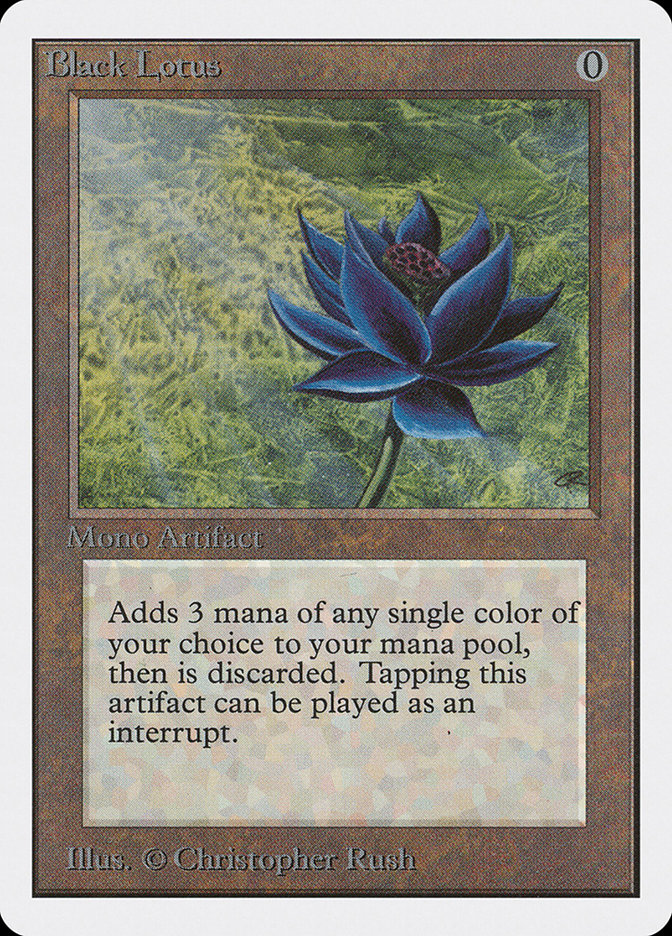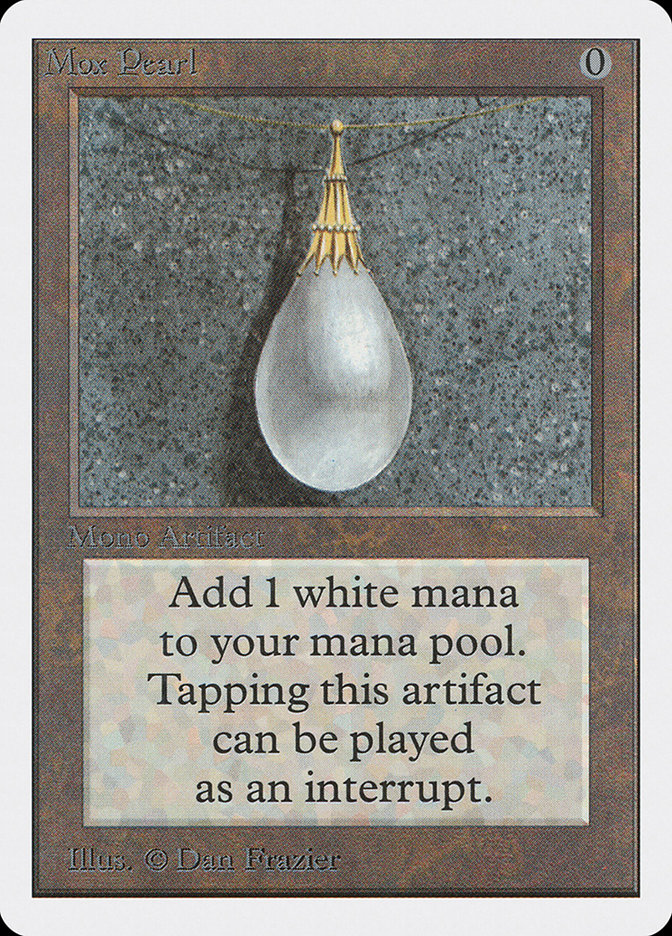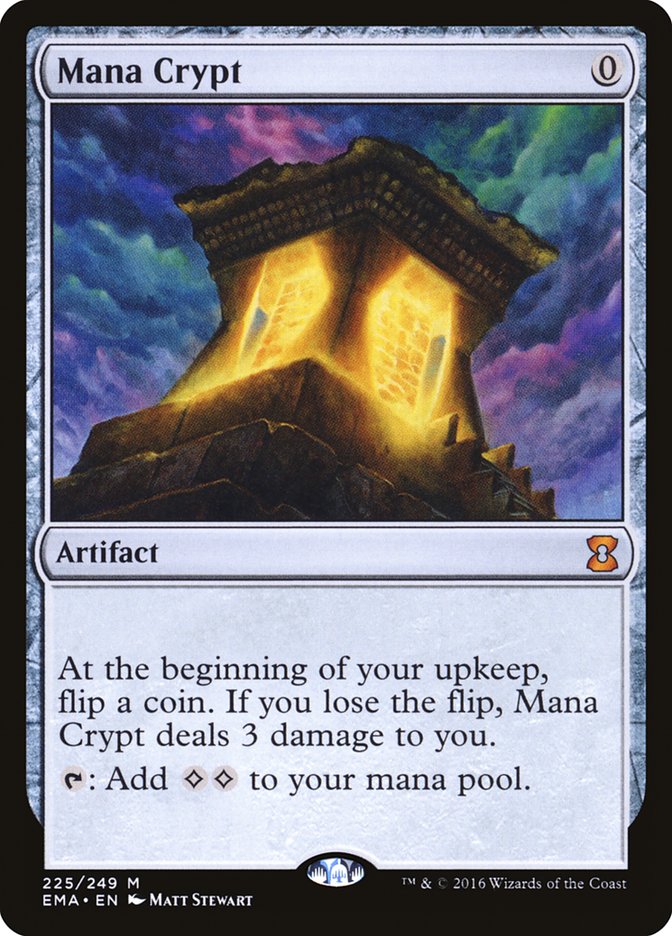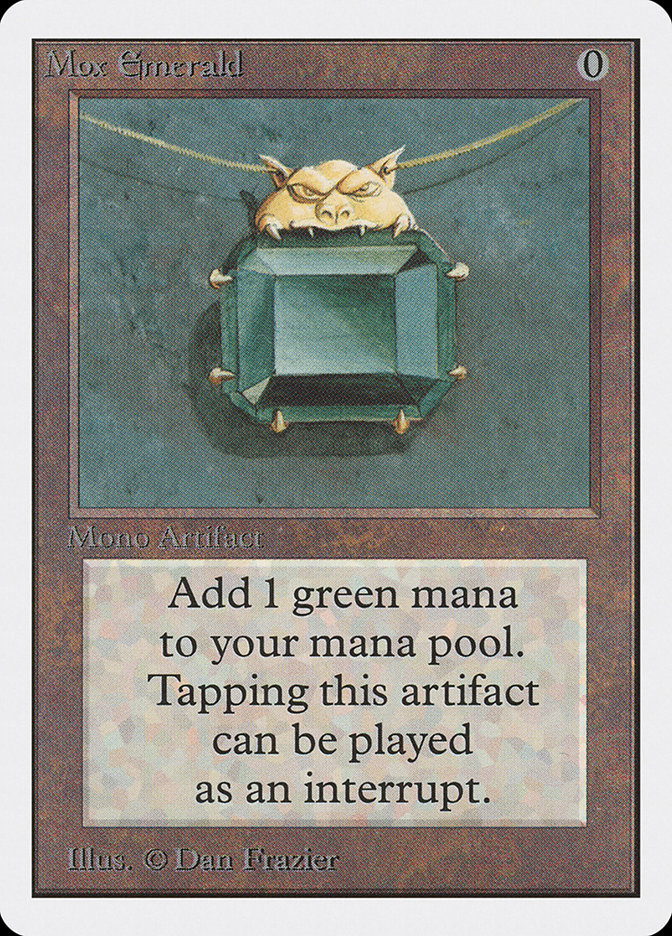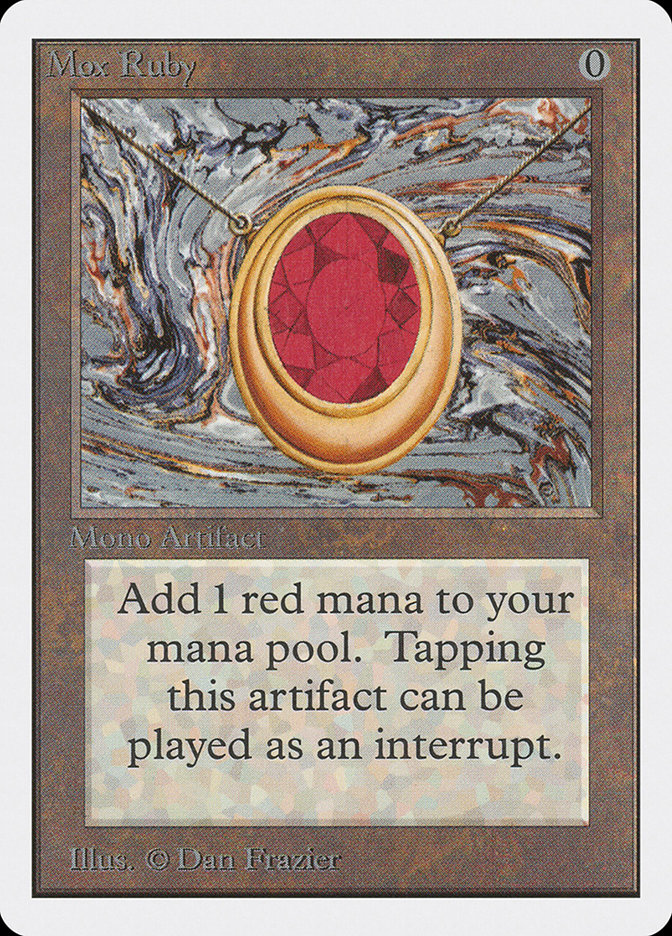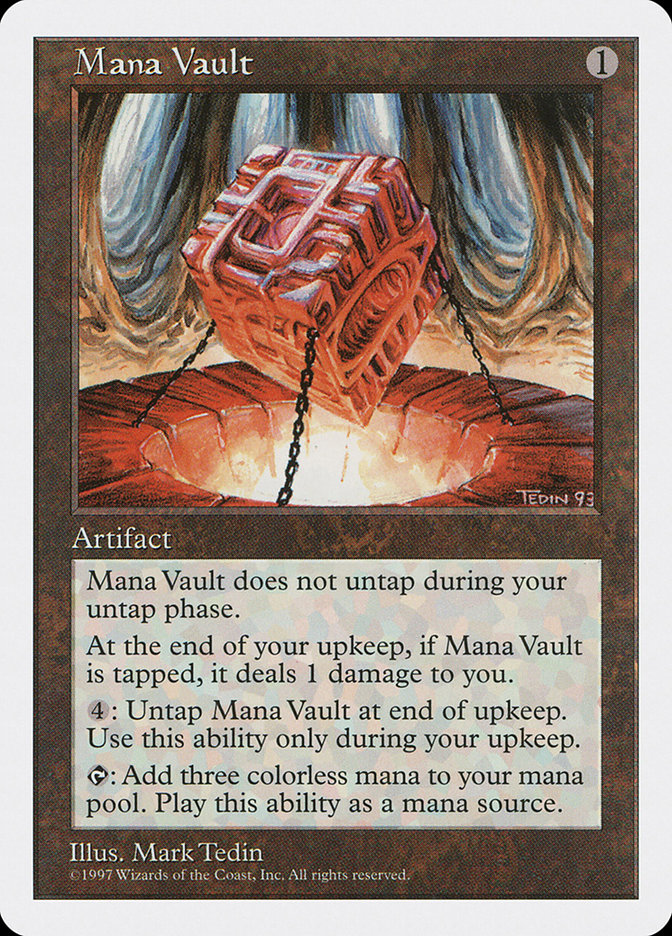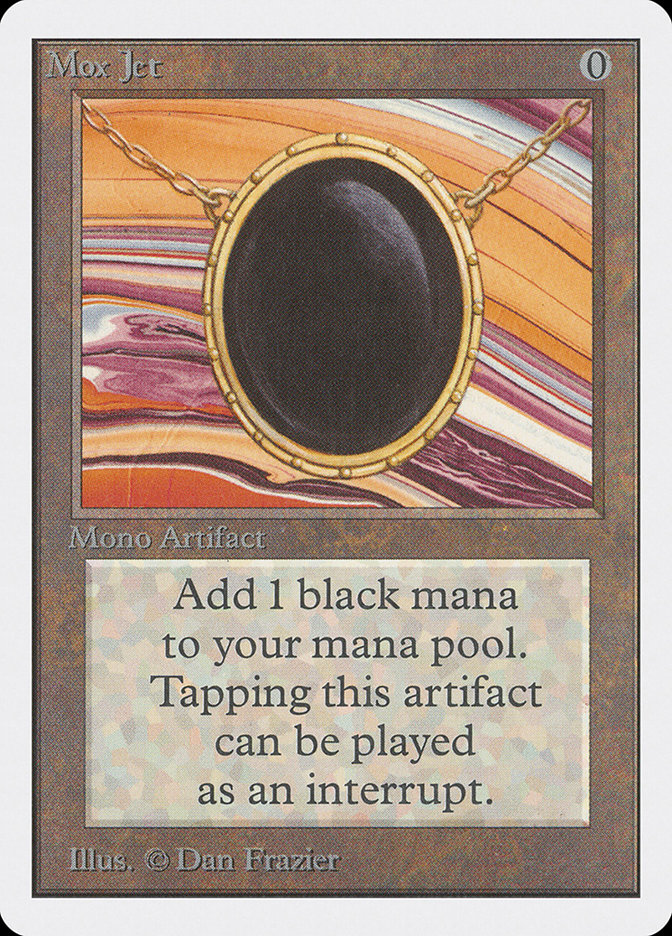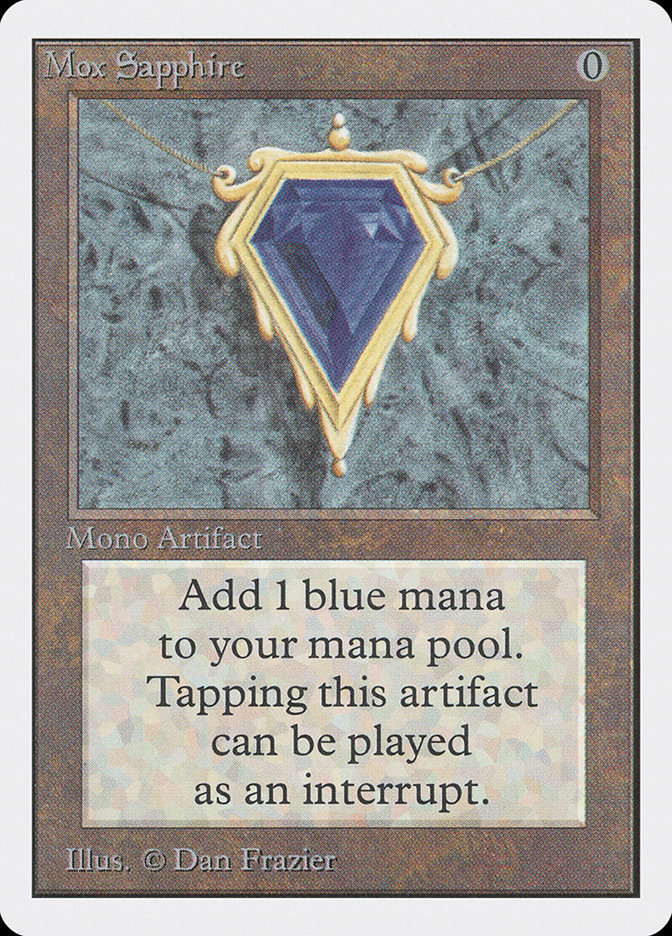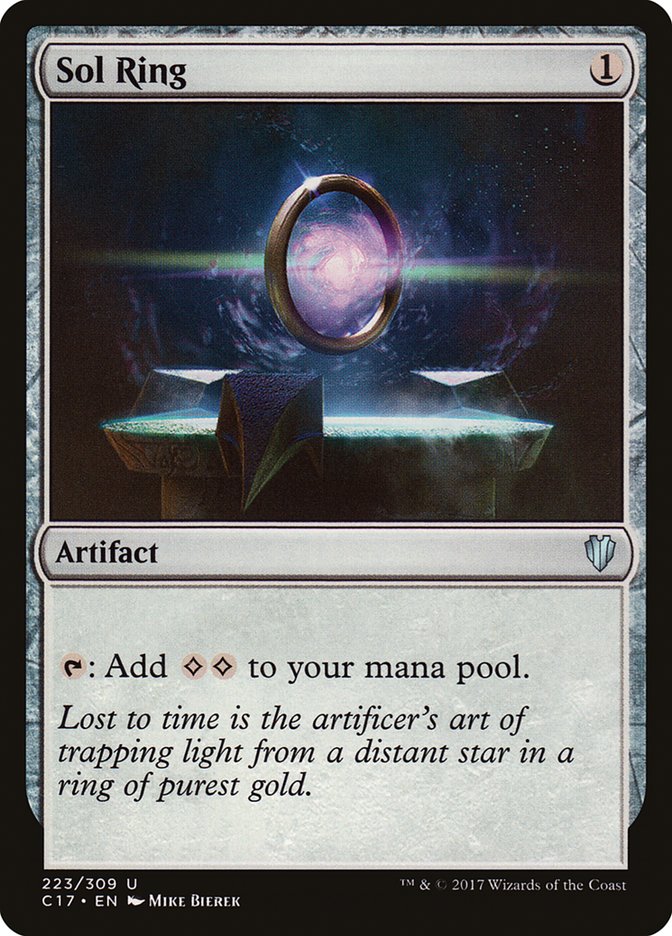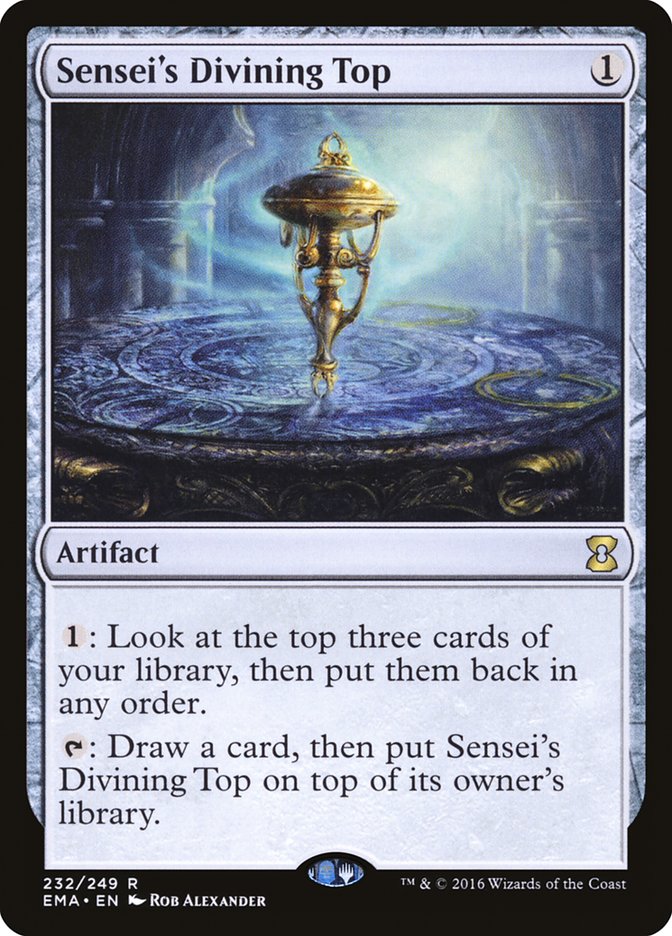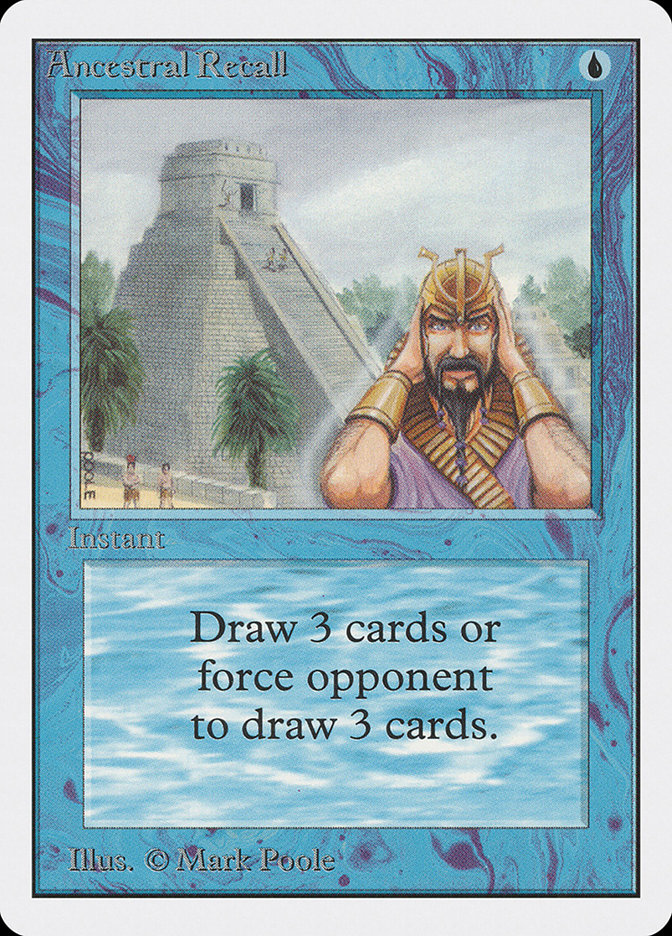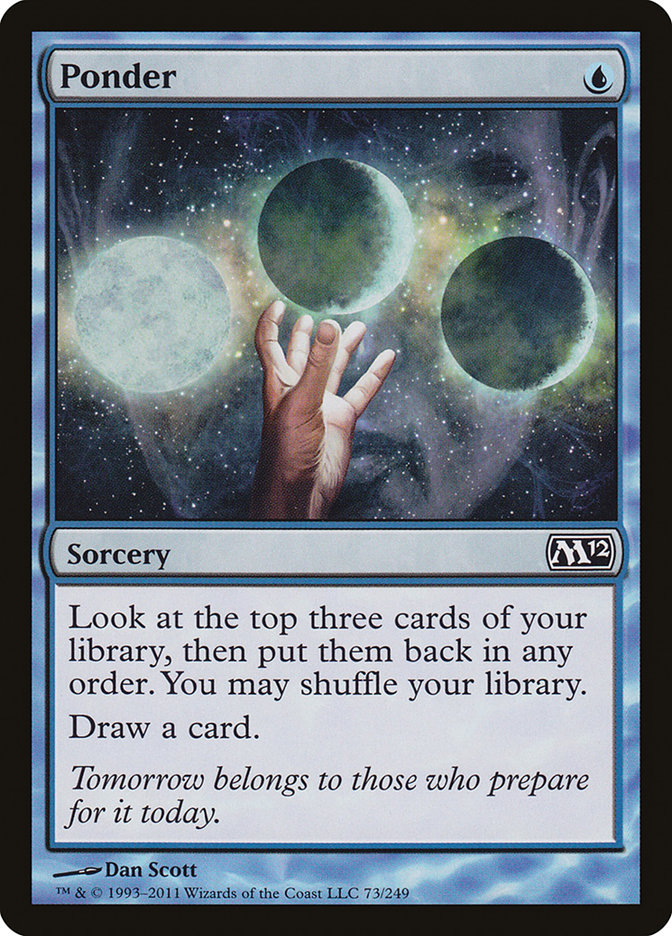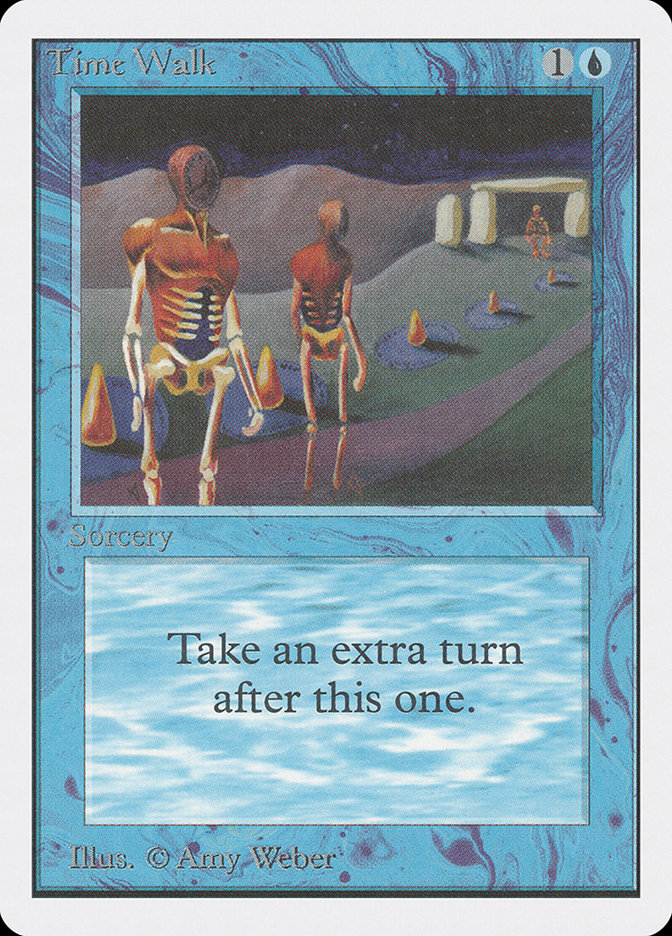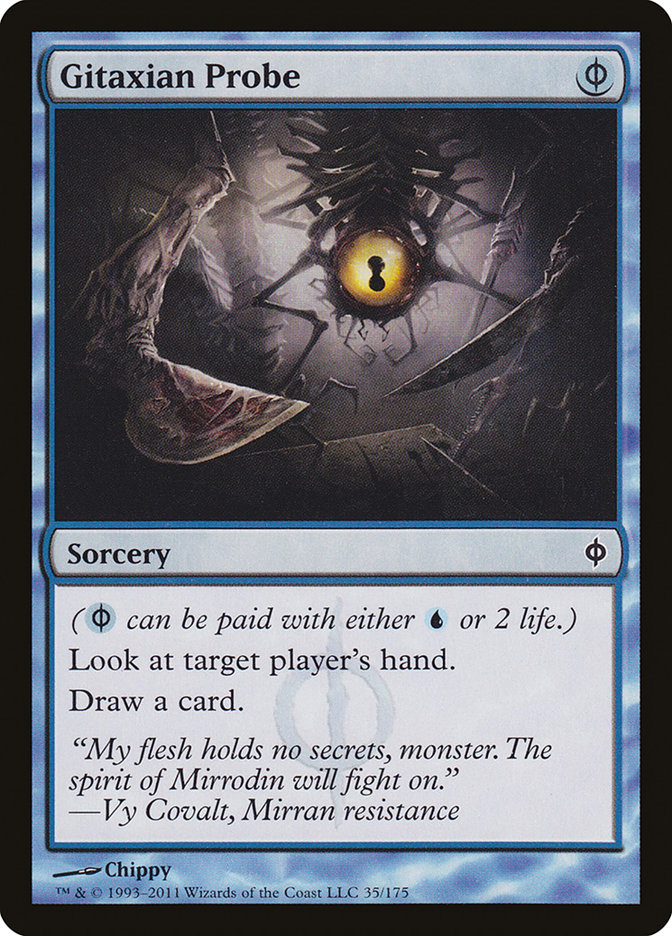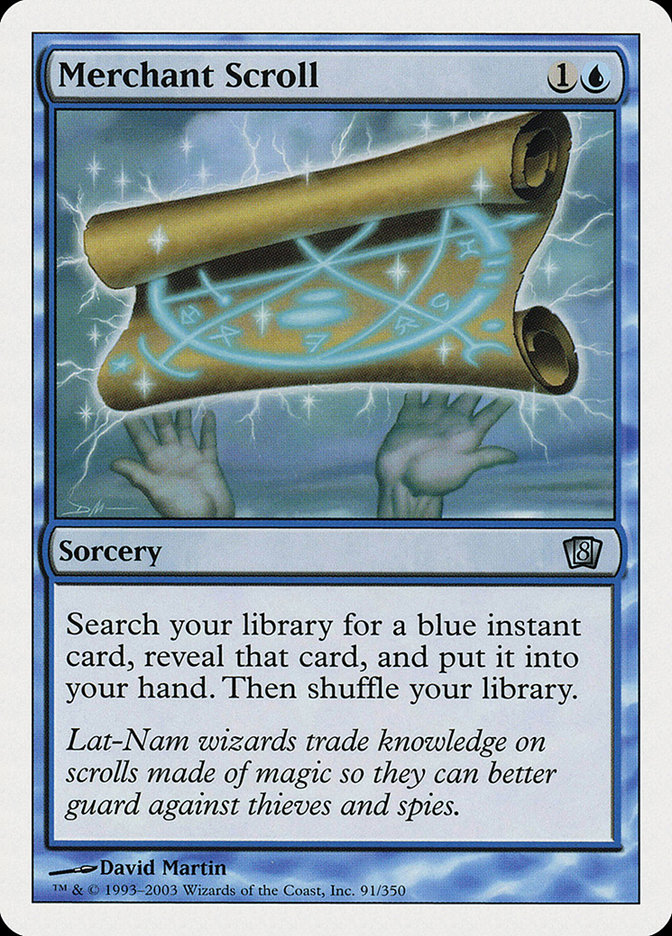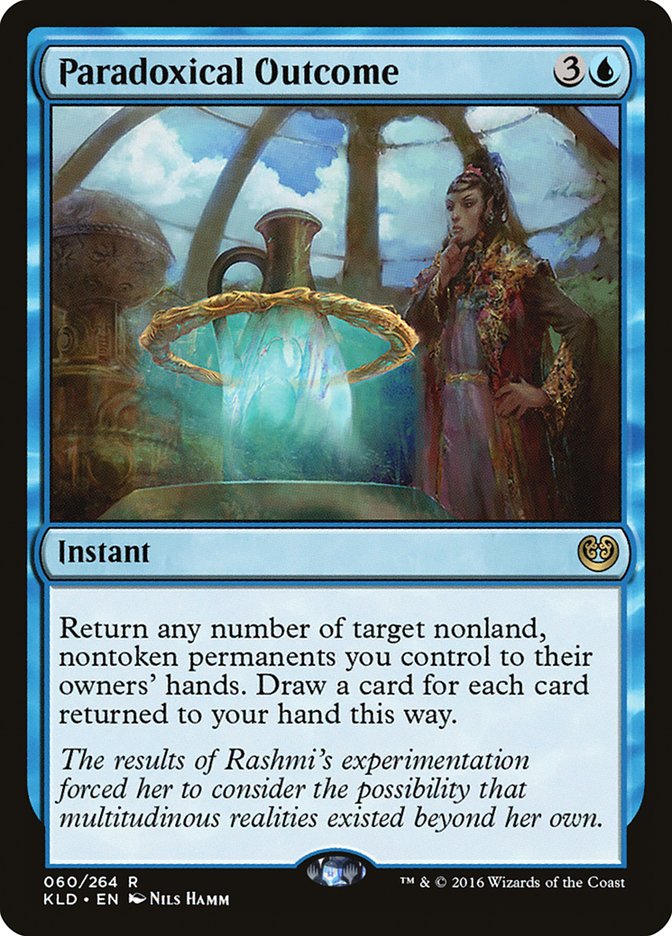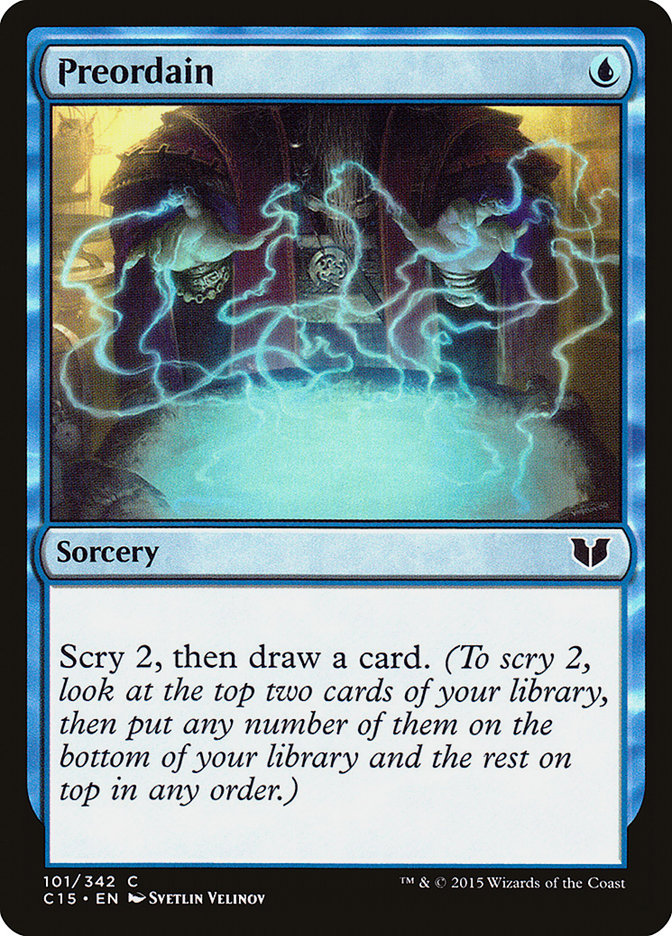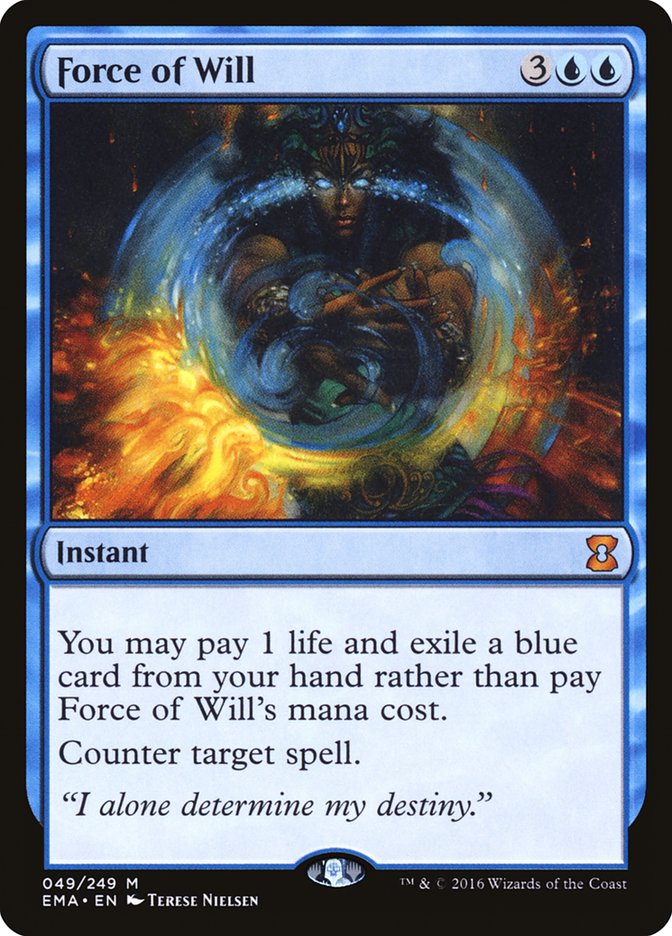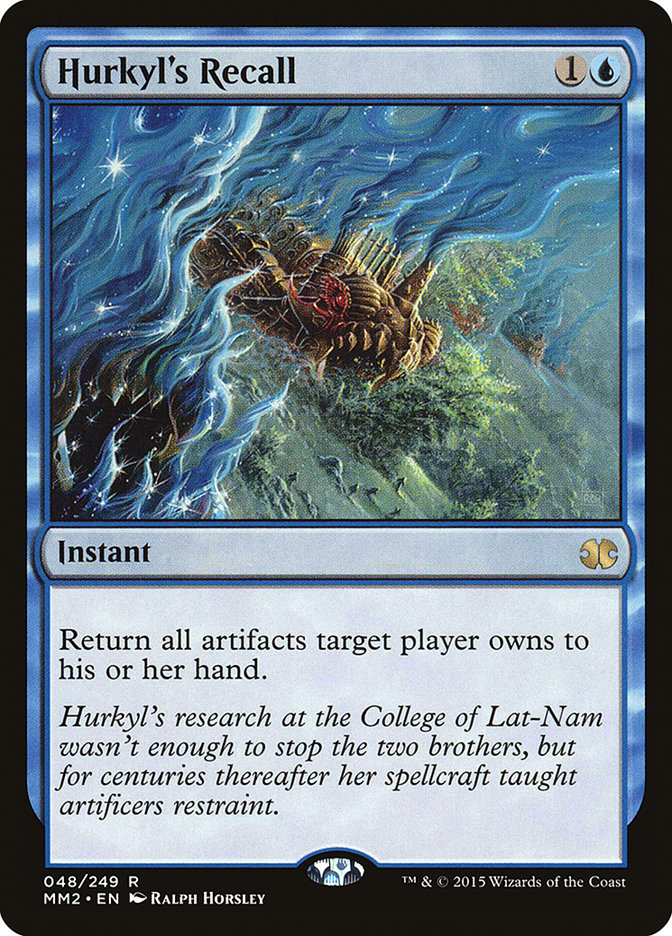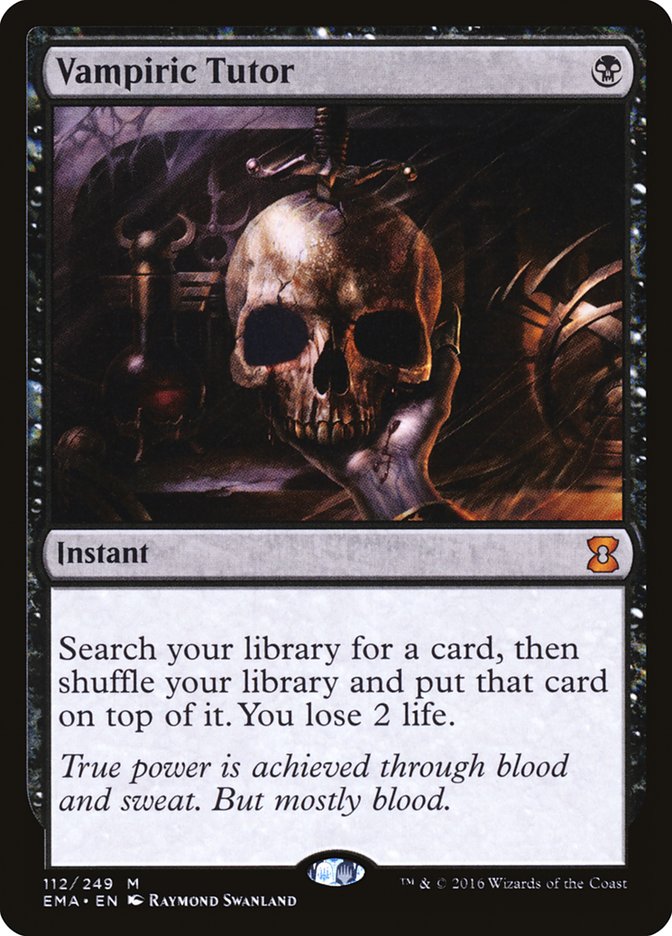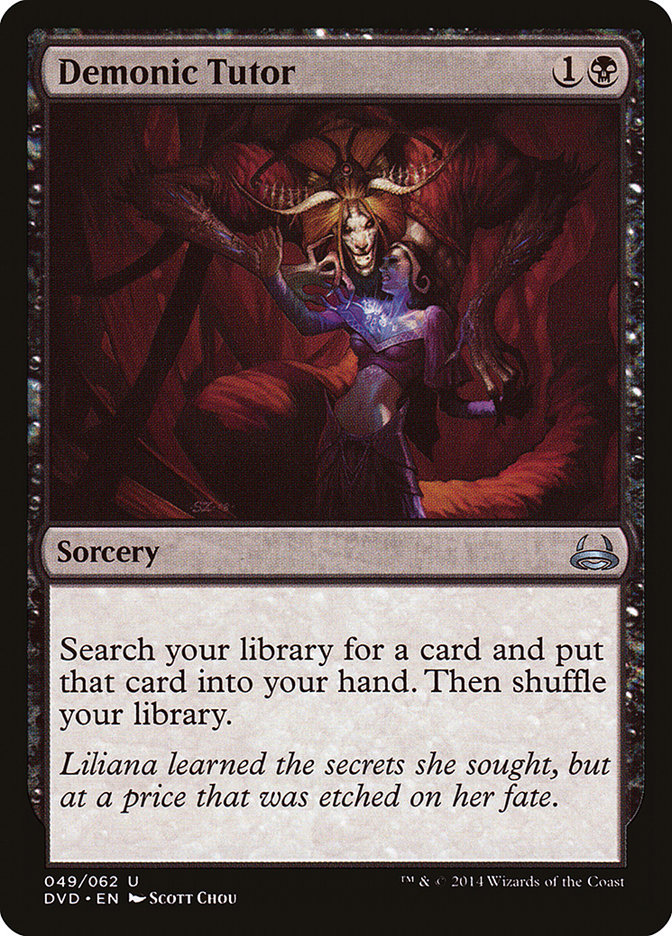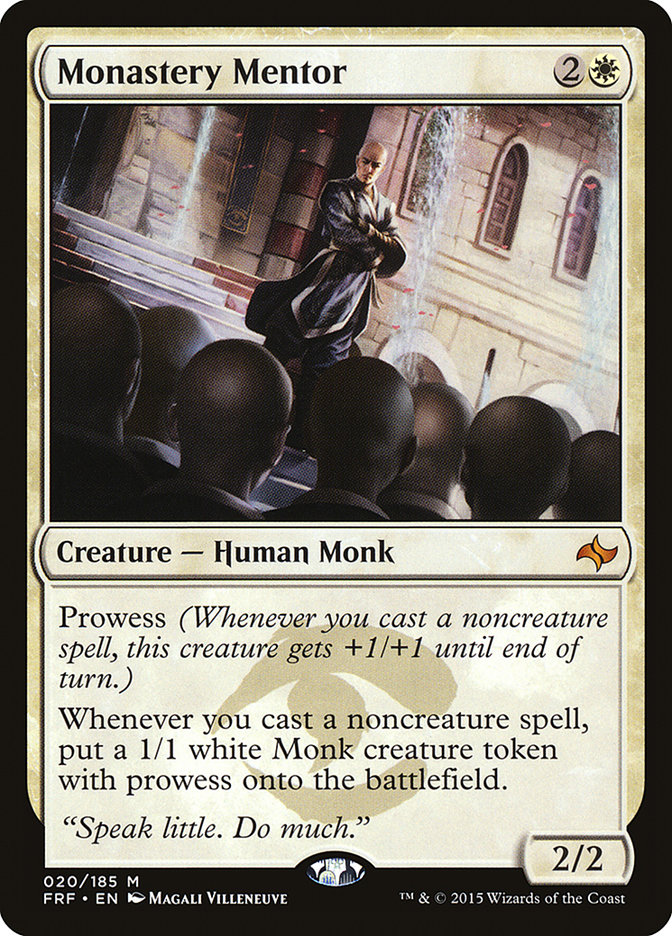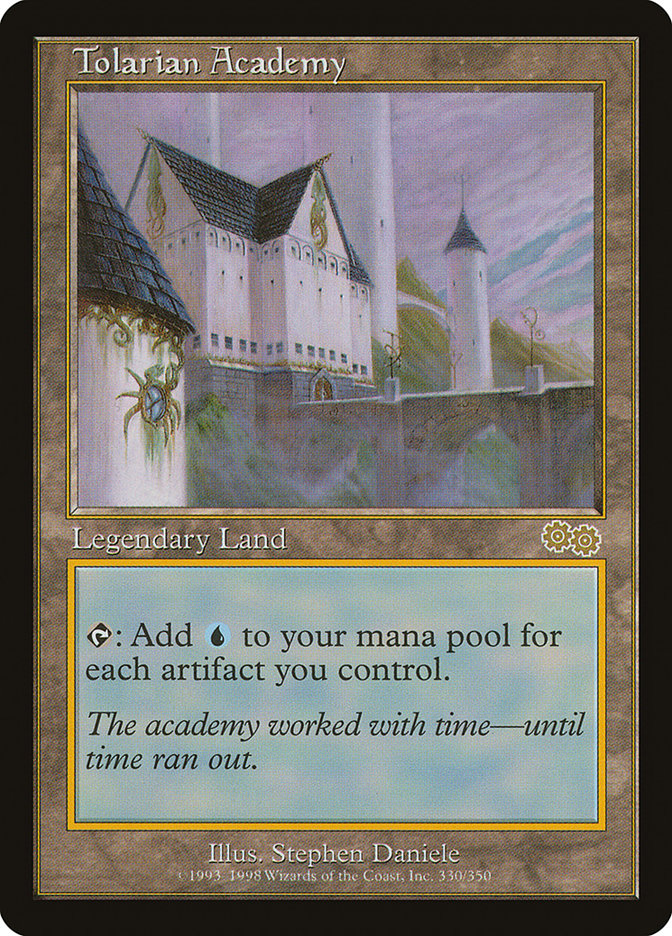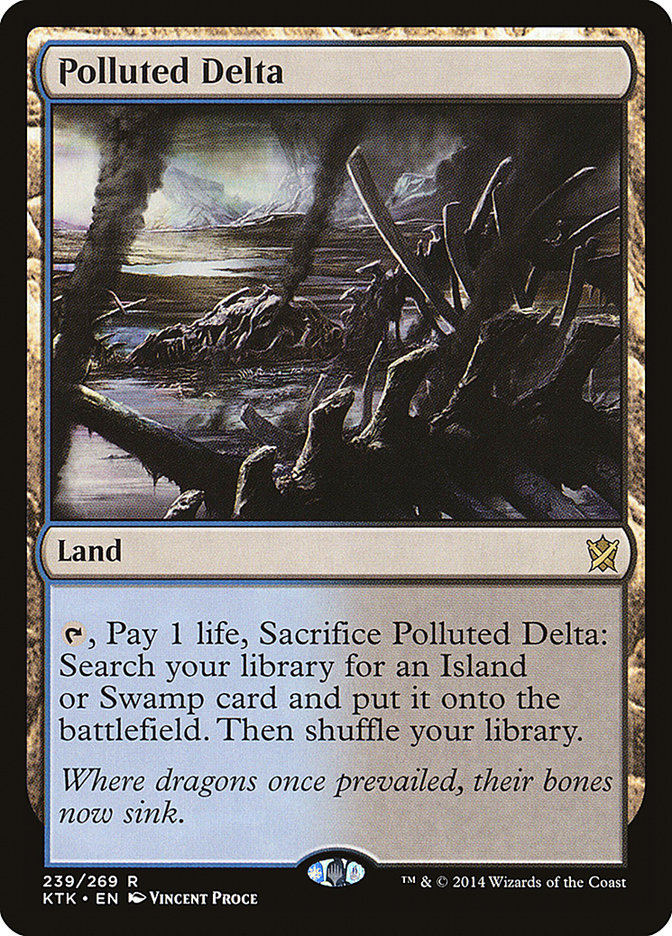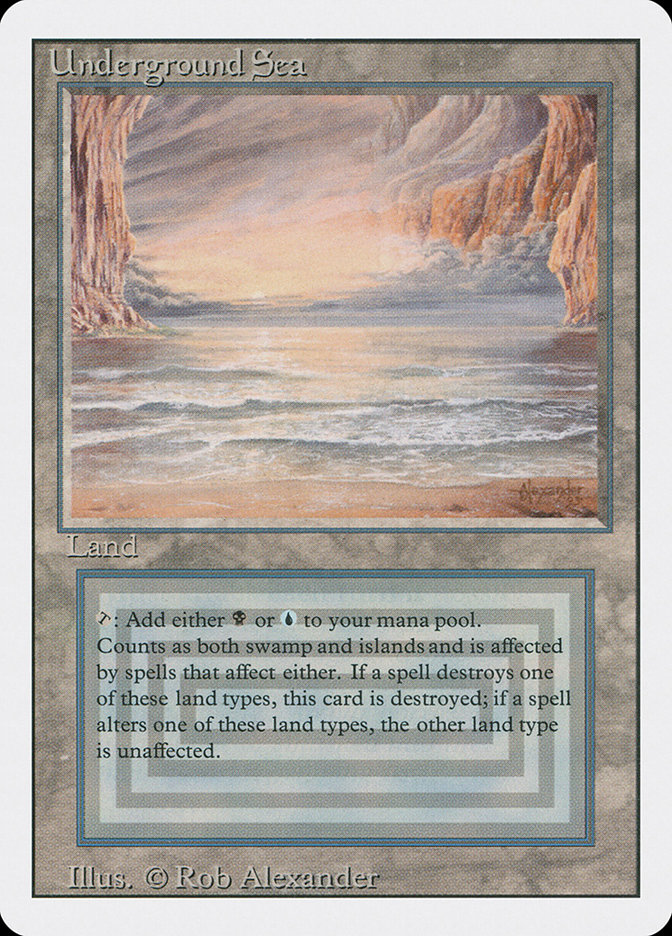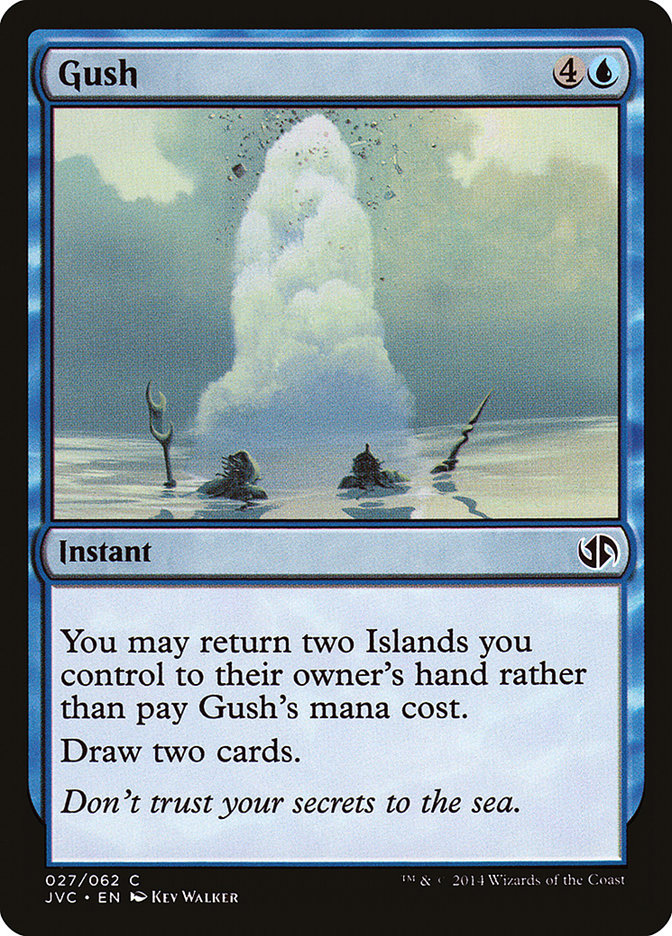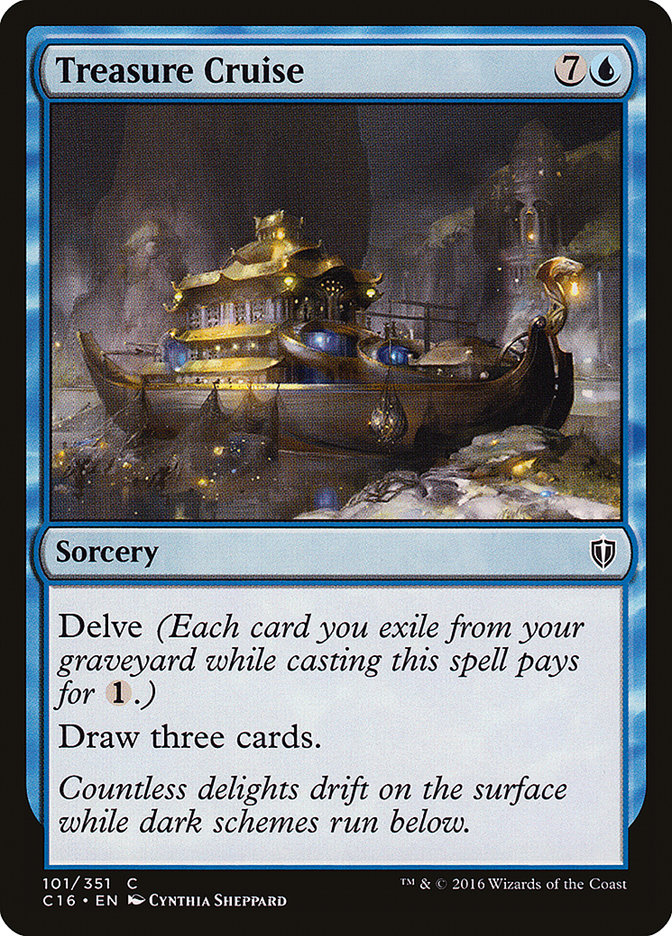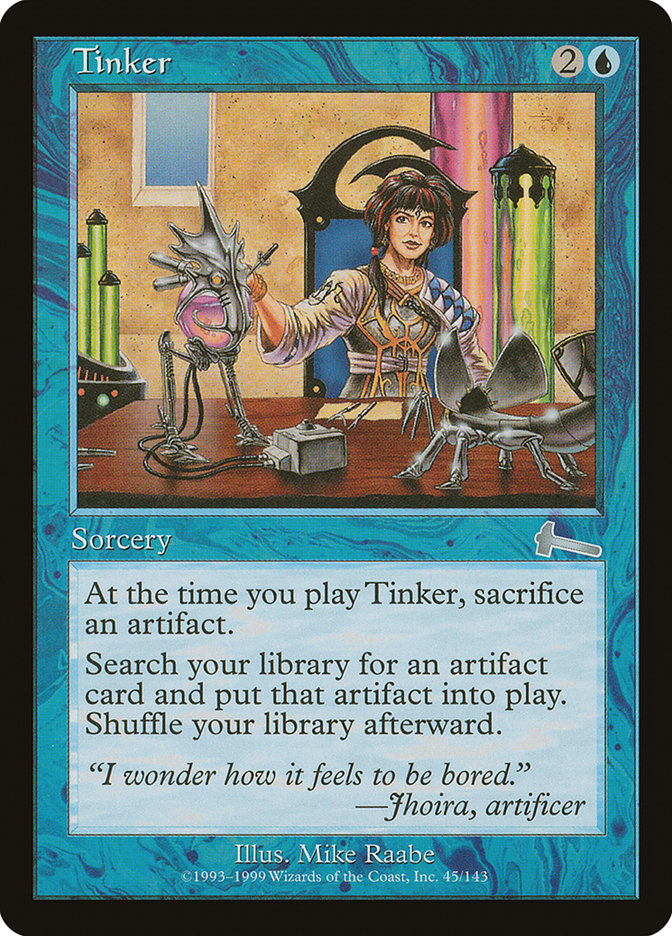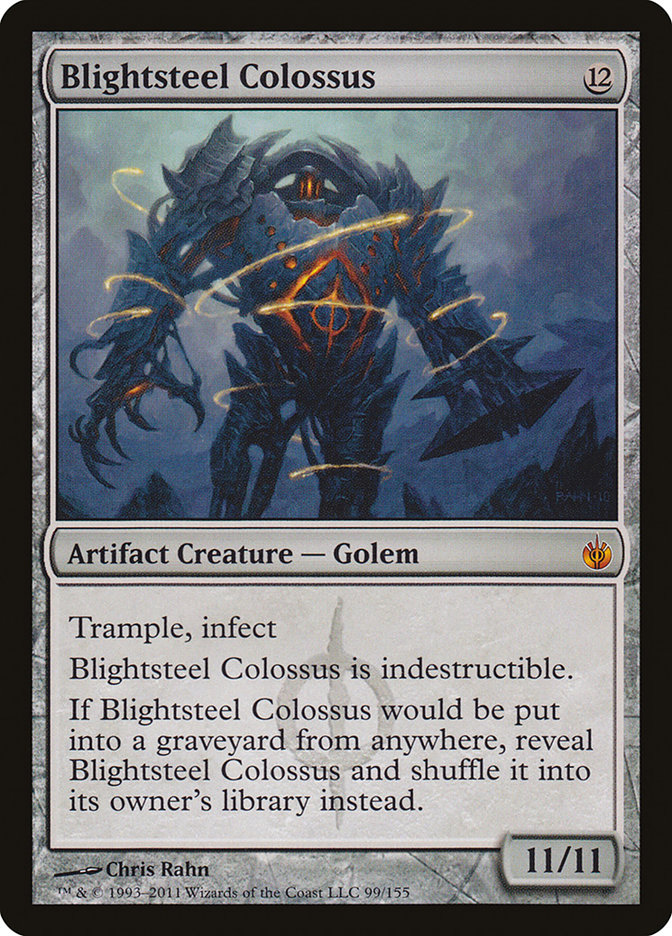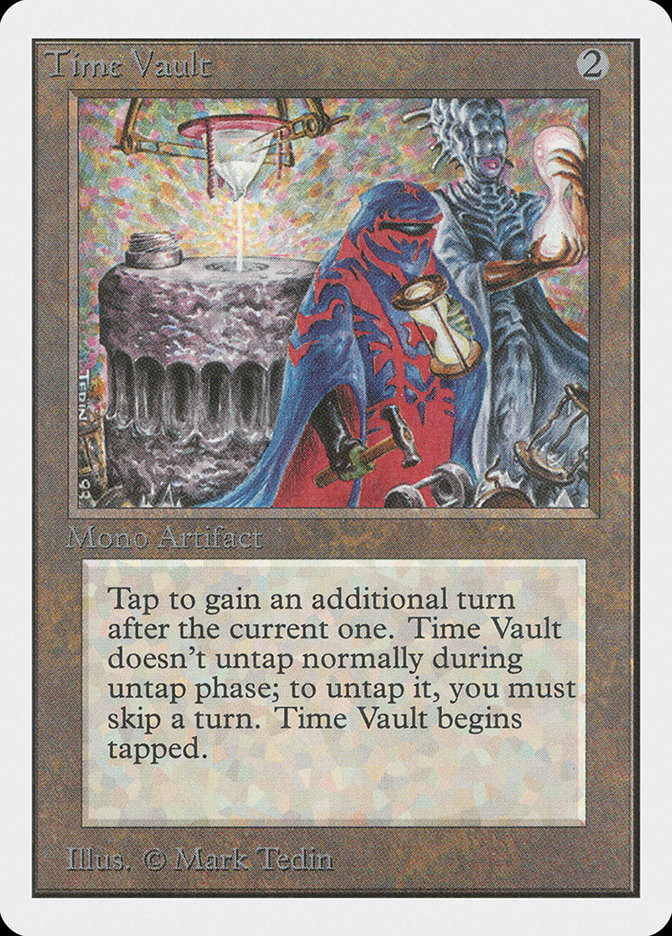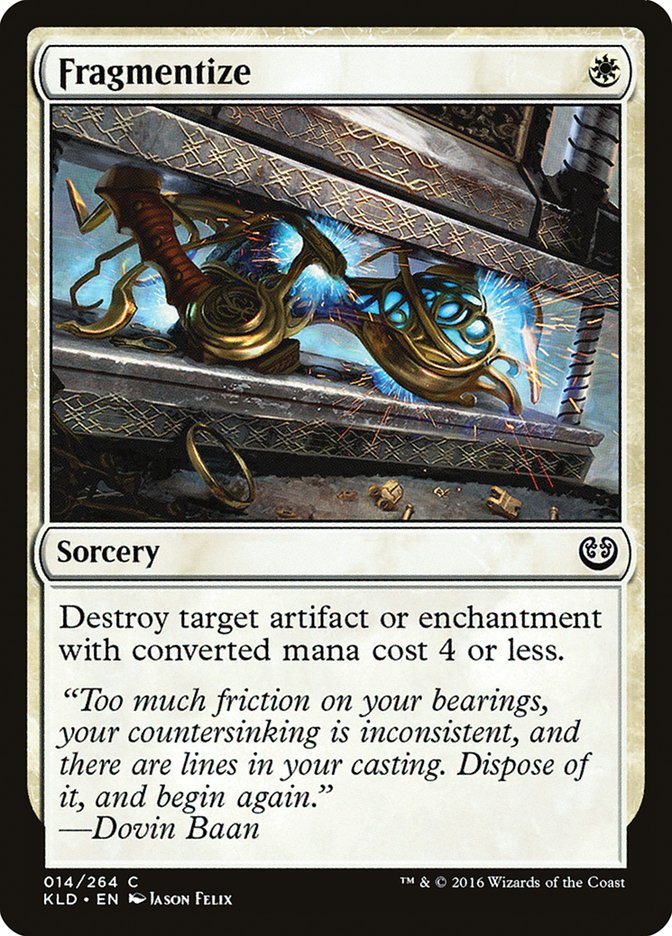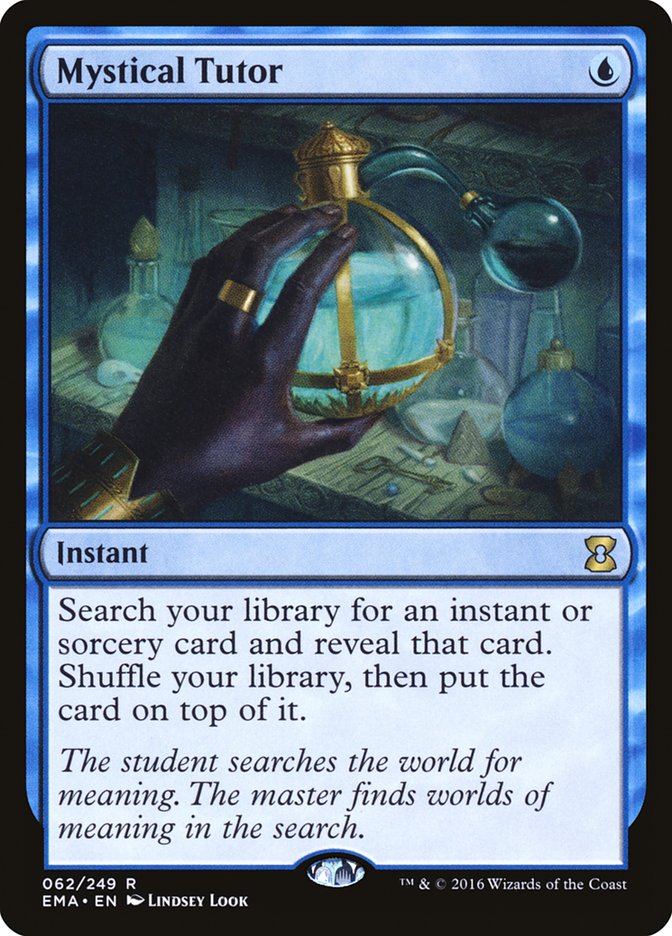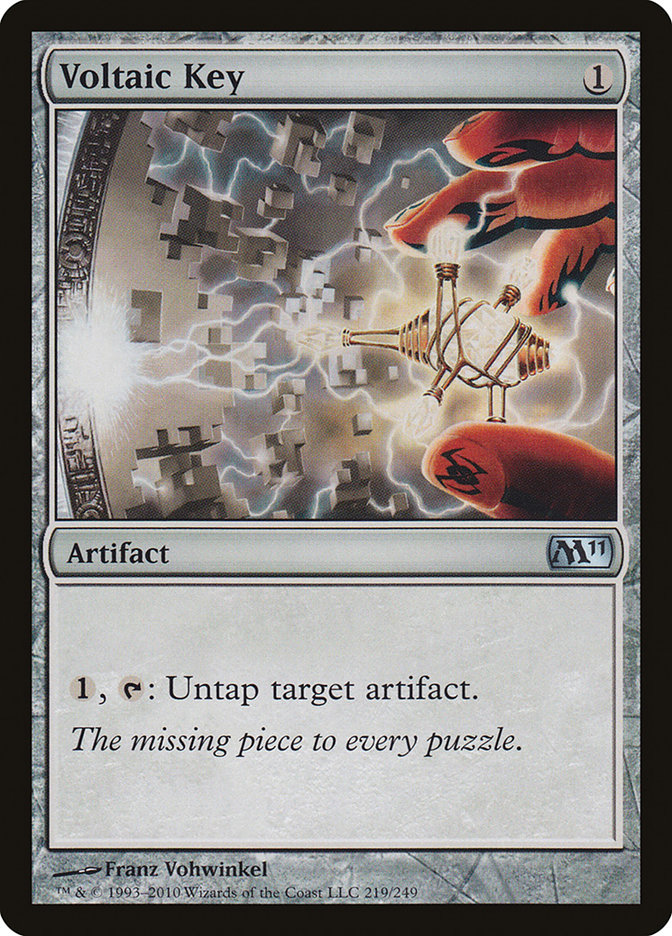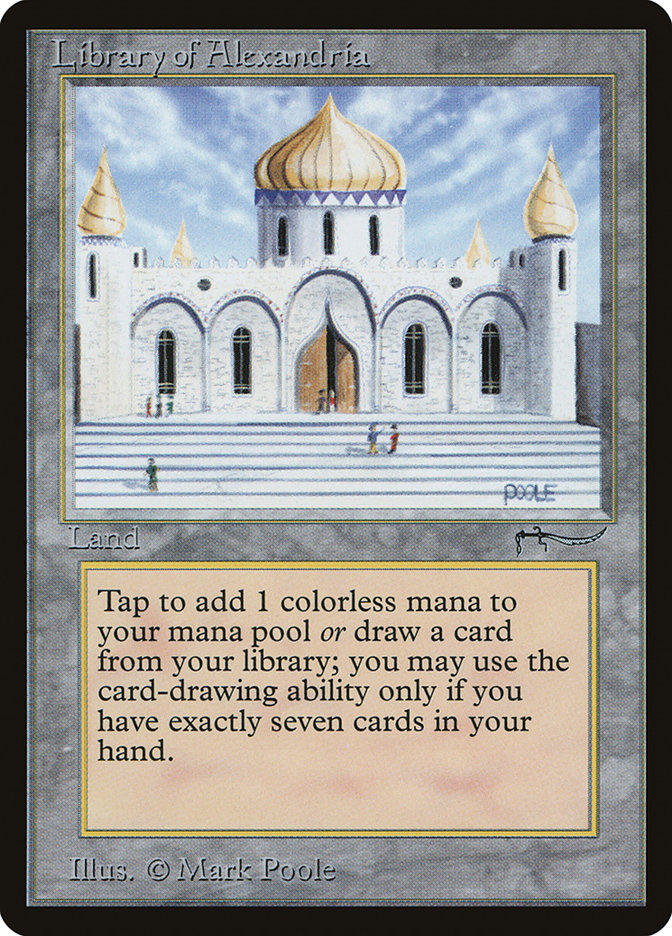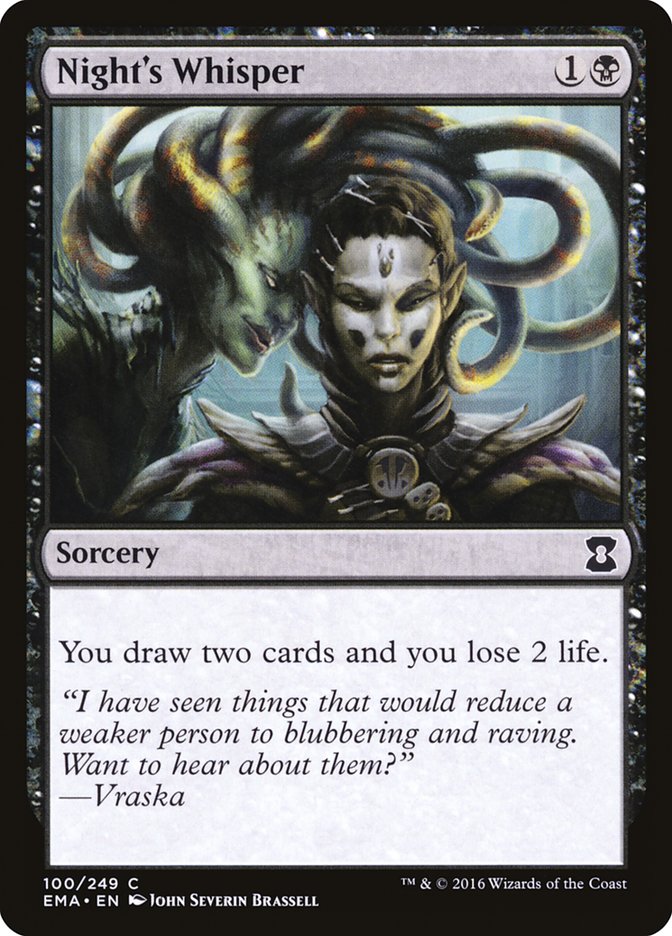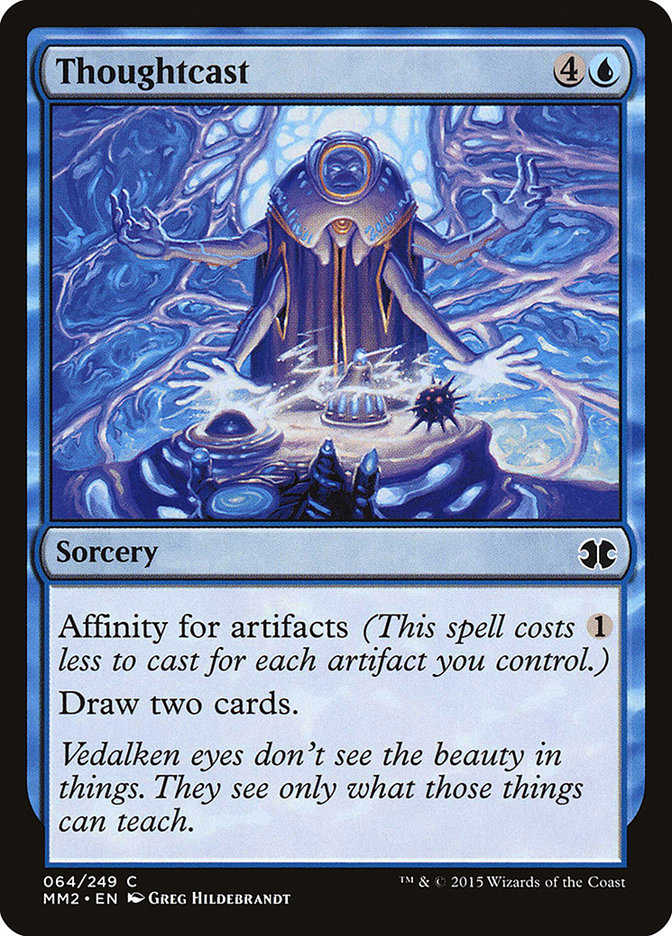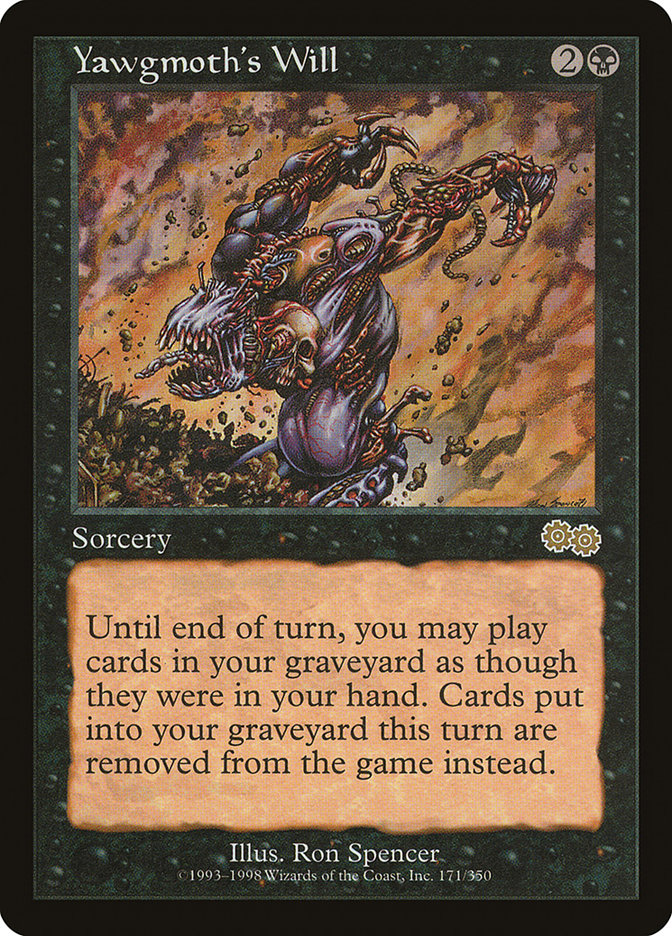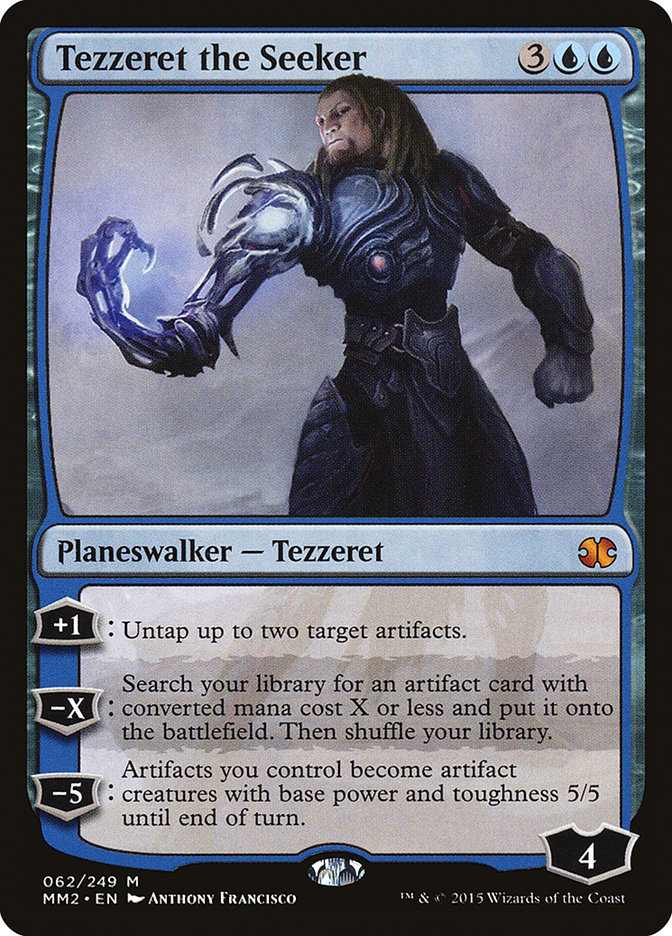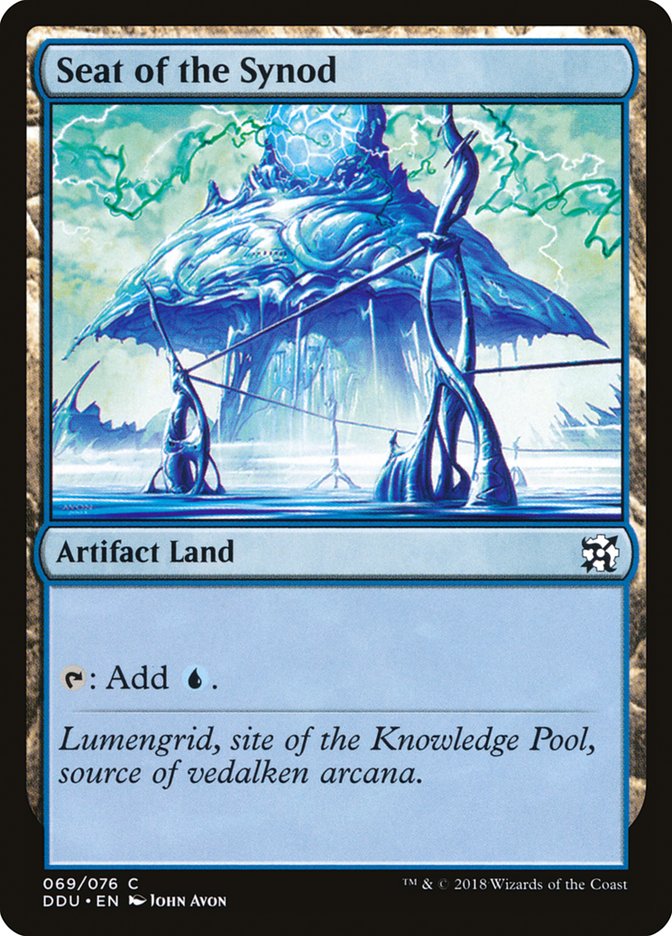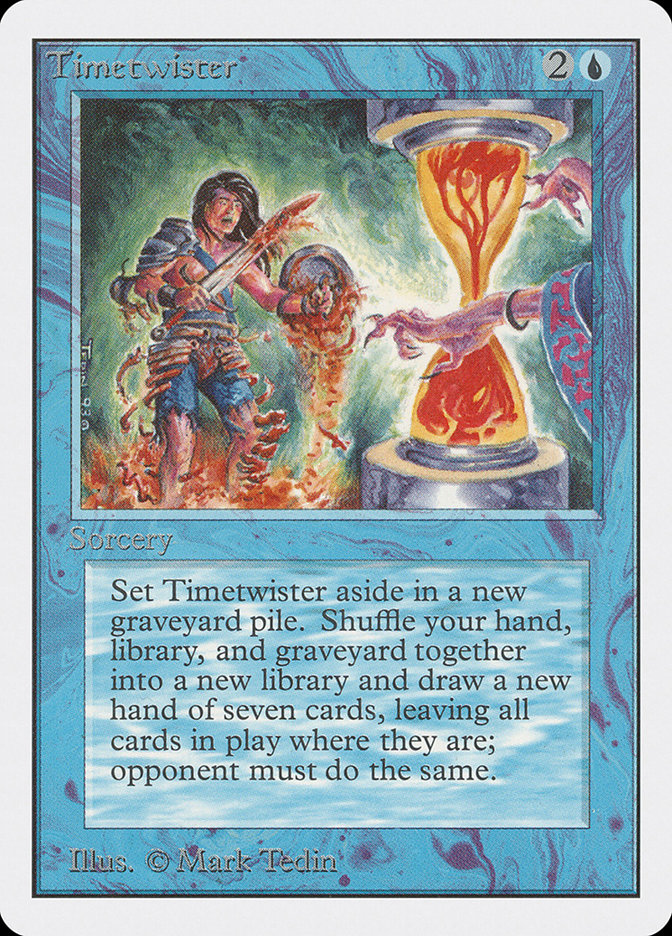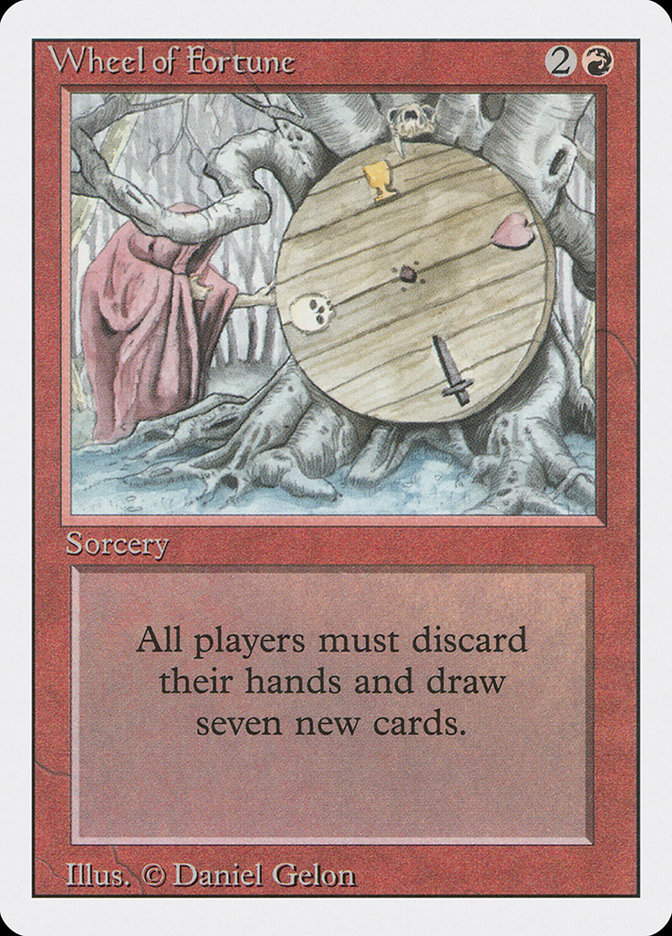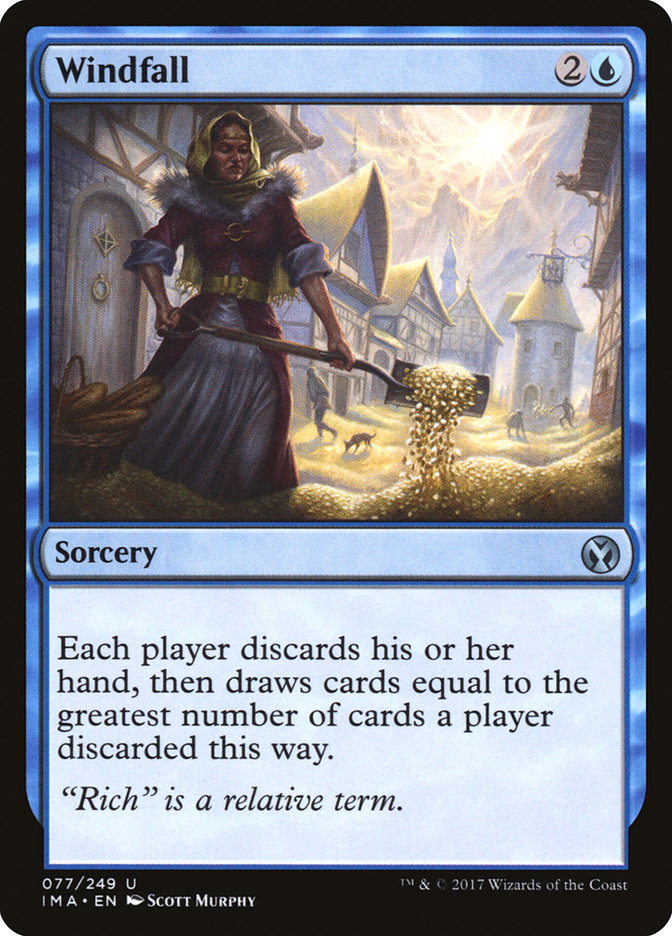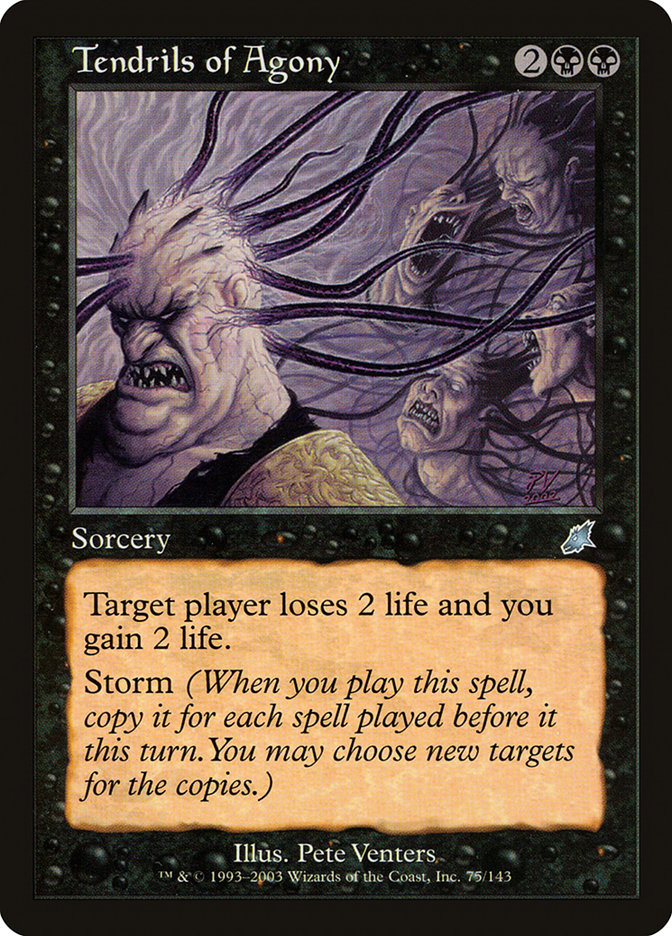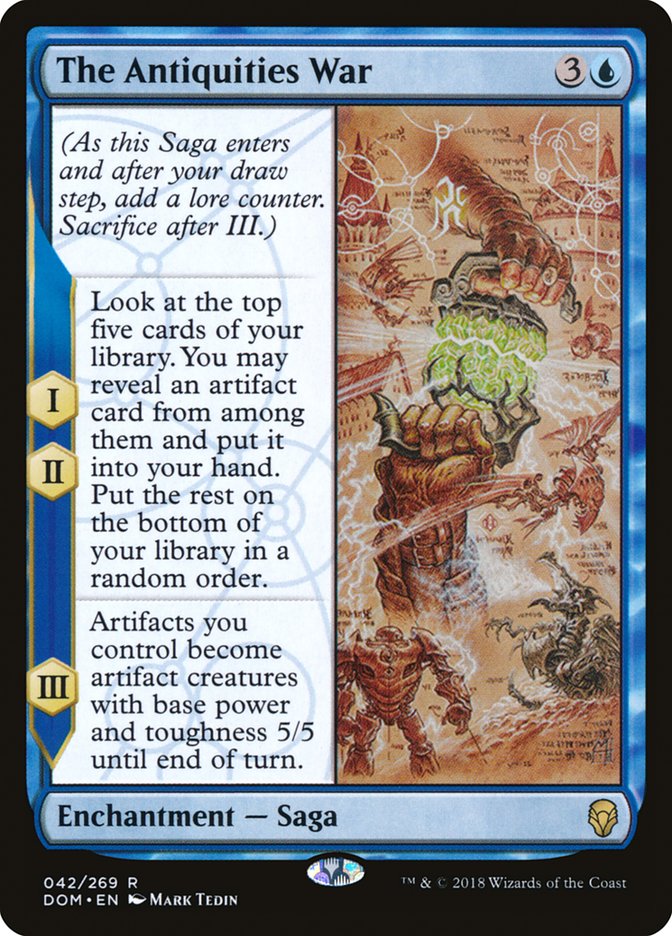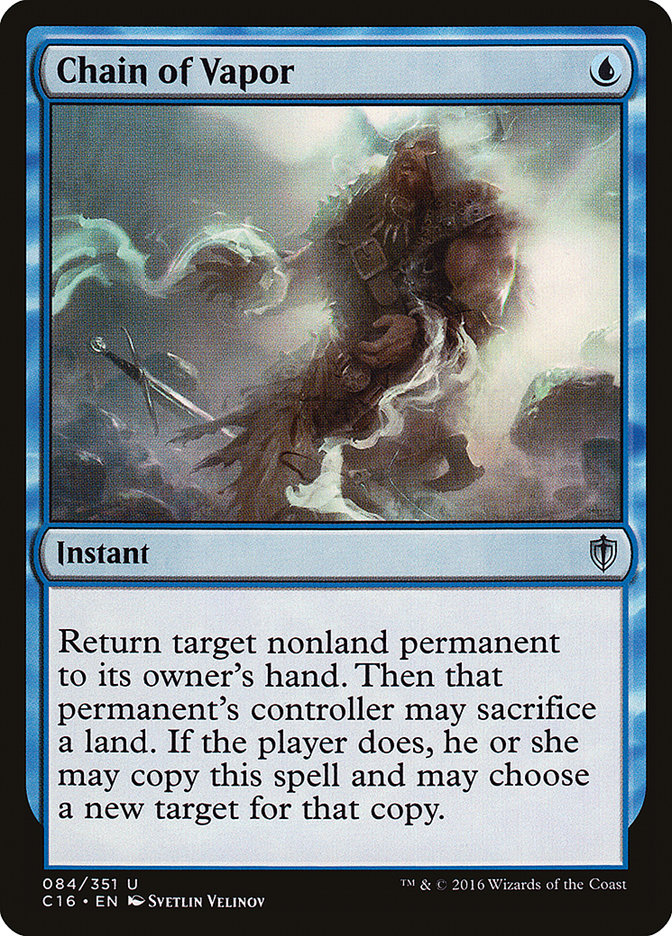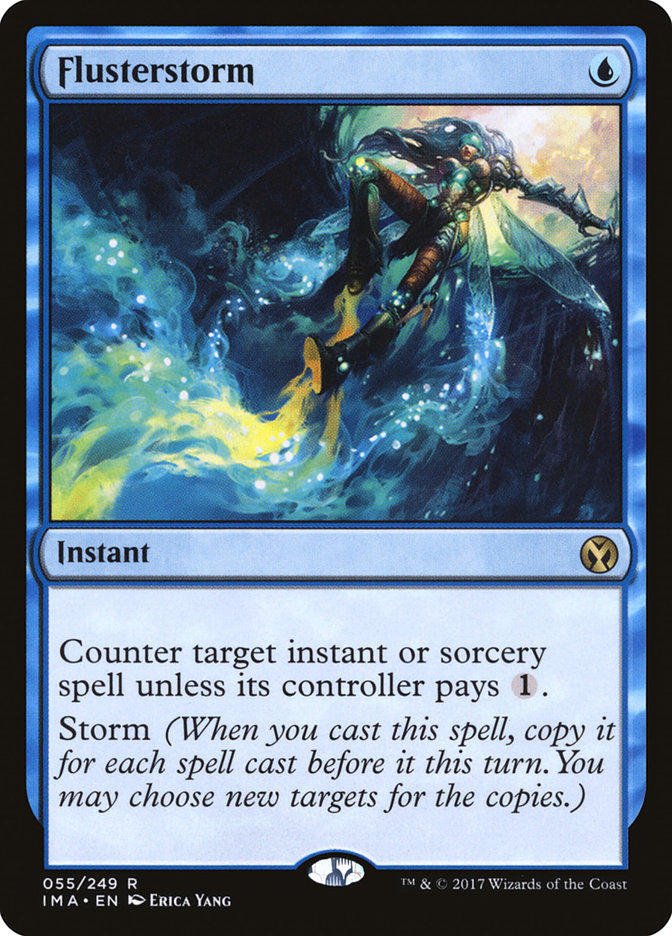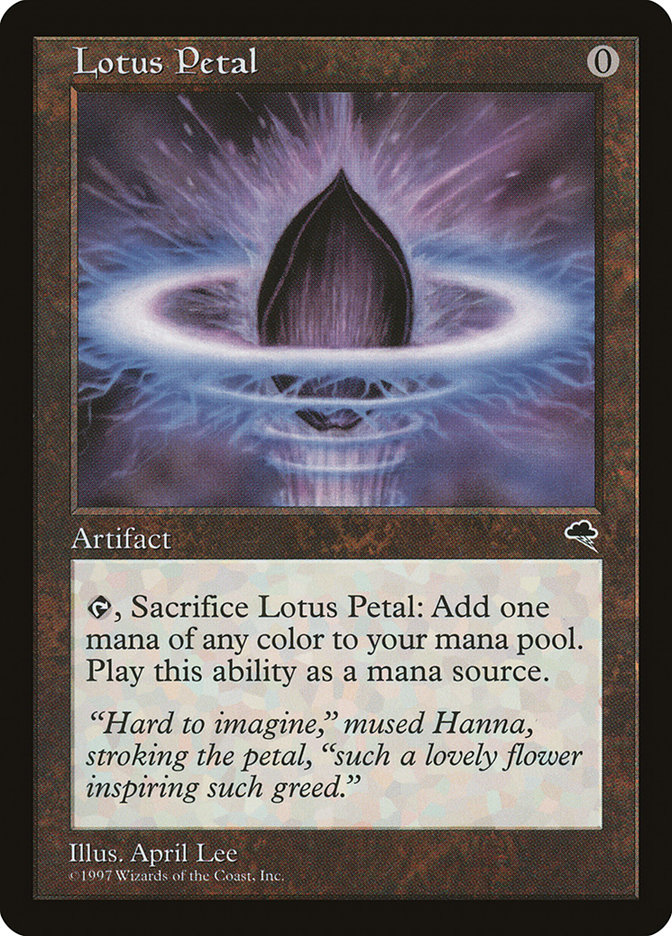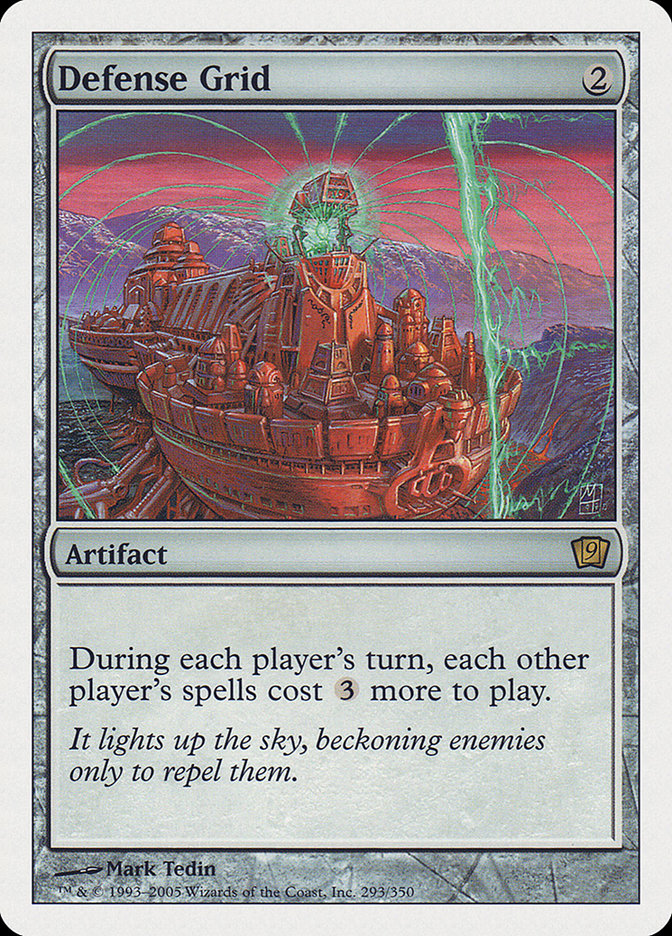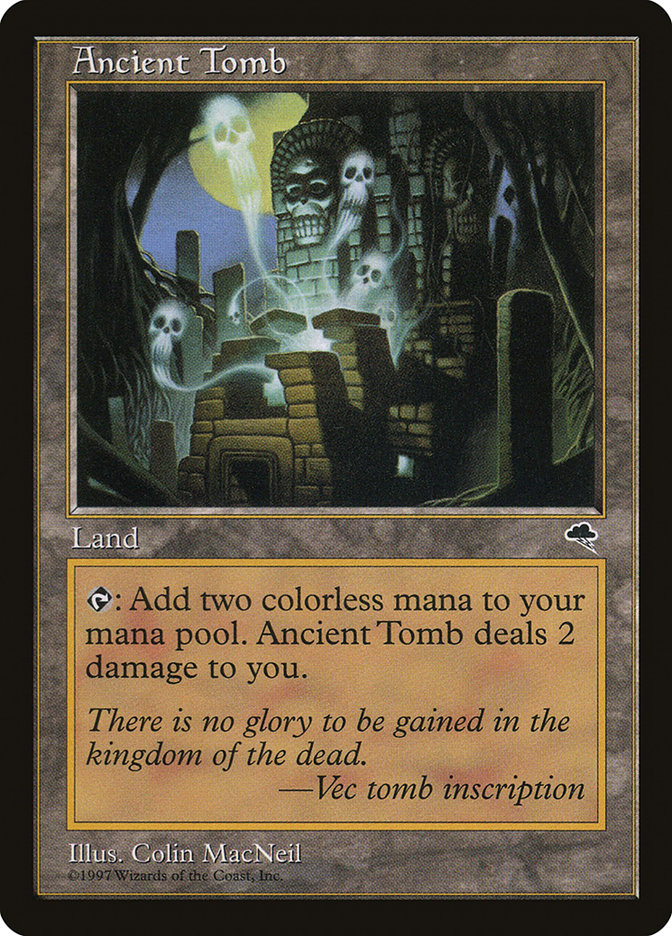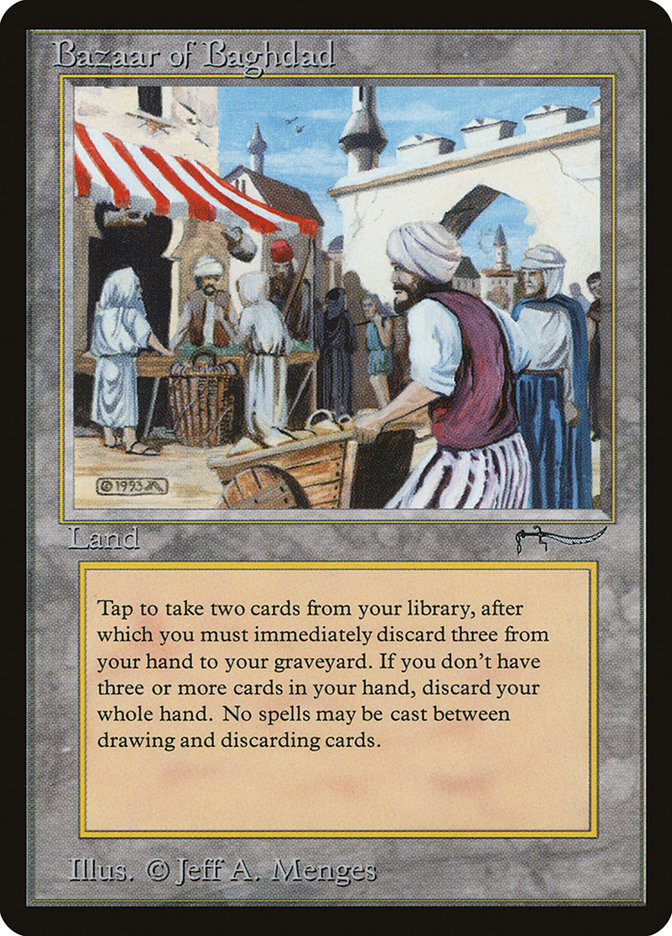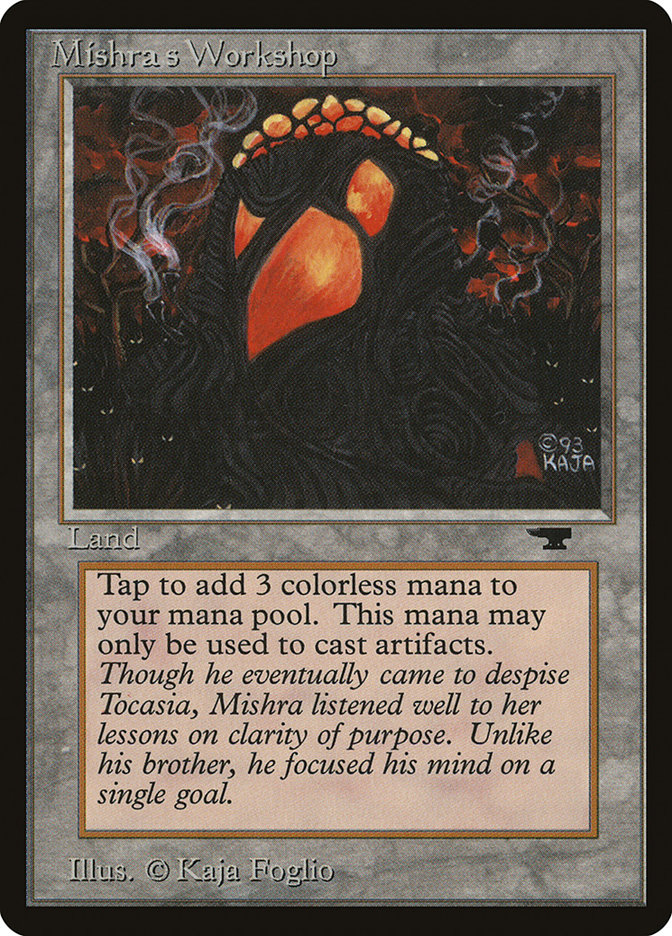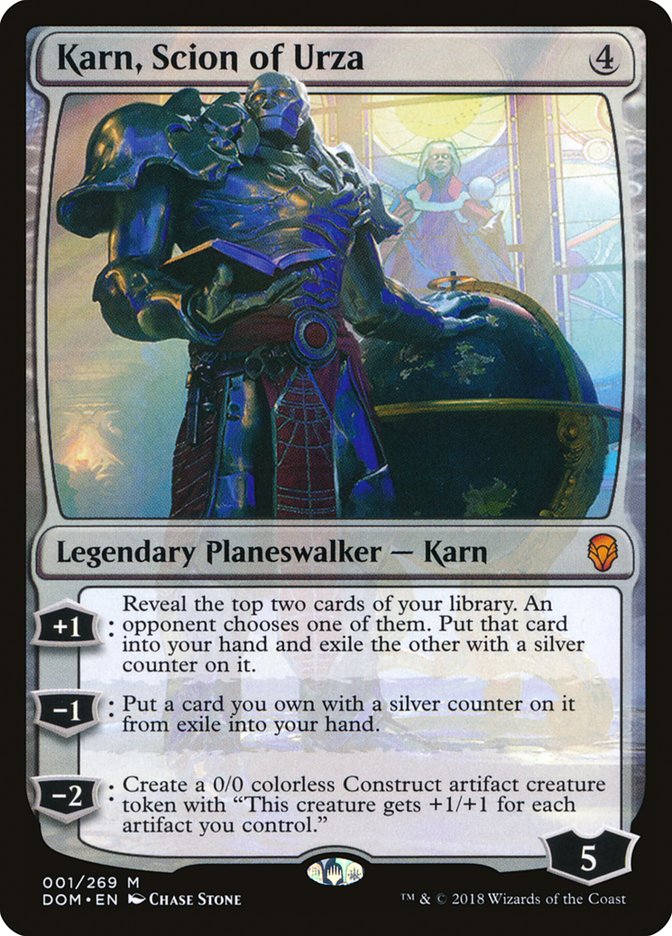There are two things that come to a non-Vintage player’s mind when they think of Vintage: The Power 9 and winning on Turn 1. While winning on Turn 1 isn’t the norm, there’s at least one Vintage deck that exemplifies this mindset: Paradoxical Outcome. Playing eight of the Power 9, Paradoxical Outcome (PO for short) is explosive. The unique artifact-centric manabase transforms Paradoxical Outcome from a fun Standard card into a Vintage powerhouse. In this deck, it isn’t rare for your POs to read: “Add mana, draw a pile of cards, generate a great storm count, and win the game.”
The Essentials
The power level of individual cards in Vintage is incredibly high. This results in decks built around a combination of powerful restricted cards and their signature engine cards. Looking at PO builds, I have identified approximately 48 cards that can be considered part of the deck’s current core.
Restricted Artifacts (9):
A Paradoxical Outcome powered deck functions by having artifacts on the battlefield so they can be targeted by PO. To accomplish this, PO plays the most powerful mana rocks Magic has to offer. These are crucial as they allow you to continue casting spells after PO has drawn you fresh cards. Mana Crypt is exceptionally strong in this deck because it costs no mana to play and can’t be countered by Mental Misstep. Mana Crypt producing two mana, instead of the one produced by the Moxen, can make a huge difference in how early you can cast PO. The deck’s most broken hands typically contain a Mana Crypt, two Moxen, and a PO.
Other Artifacts (5):
If only restricted artifacts were played, the deck would not have a high enough permanent count for Paradoxical Outcome to be consistent. PO lists supplement this by playing three more Moxen in the form of Mox Opal. Mox Opal produces any color of mana which can be crucial in chaining together multiple POs as well as casting any off-color cards you’ve chosen to splash.
Almost all PO decks have moved towards playing a pair of Sensei’s Divining Tops. This artifact fills a dual role of smoothing your draws and increasing the potency of your PO. This is done by activating the draw ability of Top, holding priority, and casting PO targeting your artifacts, including the activated Top. This will cause the draw from the Top to occur after the PO has resolved even though the Top is no longer on the battlefield.
Restricted Blue Cards (6):
As a combo deck, finding our key pieces is critical. Thankfully we have all the best blue spells at our disposal. Most Paradoxical Outcome decks play at least two of the three blue Power 9 cards as well as one of each of the restricted cantrips. Merchant Scroll (also restricted) acts as a second Ancestral Recall or Time Walk, a fifth Paradoxical Outcome, or a way to find a flexible answer like Hurkyl’s Recall.
Other Blue Cards (13):
If you play a card as a four-of in Vintage, it must contribute heavily to your gameplan. It’s imperative to include Force of Will as both a safety valve against the other decks and to protect your important spells. Preordain is the most powerful unrestricted cantrip and PO decks play a full set to find the action or protection needed to win the game. The singleton Hurkyl’s Recall was not always a mainstay in the deck but is now included to combat Mishra’s Workshop decks and to nullify opposing POs. Casting Hurkyl’s Recall in response to an opponent’s PO will result in them not drawing cards for their (now returned) artifacts. It can also be used to protect our own artifacts that we had to cast earlier in the game and when PO is not around (for example, in response to a resolved By Force).
Black Tutors and Mentor (3):
Paradoxical Outcome is an almost mono-blue deck, but fetchlands and dual lands allow splashing easily for powerful off-color cards. PO lists splash black for the restricted Vampiric and Demonic Tutor, which allow for direct access to win conditions, and splash white for the most powerful creature in Vintage, Monastery Mentor. These three restricted cards are so powerful they are splashed even if no other cards are played in their colors. Each helps to end the game quickly and efficiently.
Lands (12):
By playing so many mana-producing artifacts and draw spells, Paradoxical Outcome decks keep its land count very low. A typical list will play twelve lands split between six blue fetchlands, four blue dual lands, and at least one basic Island. All the core lands produce blue mana, but the combination of fetchlands and dual lands allows for a consistent access to secondary colors. All PO lists include the restricted Tolarian Academy, as this card functions best in a deck with as many artifacts as PO.
Choose Your Own Adventure
The 48-card core takes up a majority of the maindeck, but for me the more intriguing proposition is determining how your remaining twelve flex slots shape both your gameplan and matchups. Below are four unique Paradoxical Outcome decks. Each utilizes their flex spots in different ways. The cards in these flex spots fit into the following categories: draw spells, win conditions, utility cards, artifacts, and lands. It is worth noting that the cards which fit into more than one of these categories tend to be the most powerful inclusions.
Delve Paradoxical Outcome
Creatures (2)
Lands (13)
Spells (45)
- 2 Sensei's Divining Top
- 1 Brainstorm
- 1 Vampiric Tutor
- 1 Mystical Tutor
- 4 Force of Will
- 1 Mana Vault
- 1 Balance
- 1 Sol Ring
- 1 Demonic Tutor
- 1 Hurkyl's Recall
- 1 Time Walk
- 1 Ancestral Recall
- 1 Mana Crypt
- 1 Gush
- 1 Time Vault
- 1 Merchant Scroll
- 1 Tinker
- 2 Voltaic Key
- 1 Black Lotus
- 1 Mox Emerald
- 1 Mox Jet
- 1 Mox Pearl
- 1 Mox Ruby
- 1 Mox Sapphire
- 1 Ponder
- 4 Preordain
- 3 Mox Opal
- 1 Gitaxian Probe
- 1 Treasure Cruise
- 1 Dig Through Time
- 4 Paradoxical Outcome
- 1 Fragmentize

Flex Draw Spells (3):
Flex Utility (3):
Flex Artifacts (2):
Flex Lands (1):
Flex Slot Analysis:
I piloted 74/75 cards of this list to a first-place finish at the The Mana Drain Open 19. Originally tuned by Team Snapcardster, lists similar to this one have become the go-to for Magic Online Paradoxical Outcome players. Snapcardster utilizes their flex slots to allow for powerful combo plays while still having access to a long game with delve spells and the powerful answer cards Balance and Fragmentize.
To supplement PO’s existing draw spells, Snapcardster elects to play three of the most powerful draw spells ever printed: Gush, Treasure Cruise, and Dig Through Time. PO produces a large amount of mana from artifacts and puts cards into its graveyard at a reasonable pace with its one-mana cantrips. This allows for the delve spells to provide a way of refueling if a PO is countered.
Gush works in tandem with Monastery Mentor as a powerful one-two punch while also helping to maintain Library of Alexandria’s seven-card requirement. Explaining the power and usage of Gush would take an entire book. To make a long story short, having access to a draw spell that does not require mana after playing a Monastery Mentor is very powerful, as it guarantees a prowess Monk token immediately without additional mana investment.
This list chooses to combat hate cards head-on with its Mystical Tutor package of Fragmentize and Balance, while also assisting with their choice of playing Tinker as a win condition. Once the Tinker / Blightsteel Colossus combo is included, there’s little reason not to include the Time Vault / Voltaic Key infinite turns combo. Voltaic Key serves three purposes in the deck: the game-winning Time Vault combo, an additional cheap artifact for PO and Mox Opal, and the ability to produce mana or cards by untapping mana rocks that produce two or more mana and Sensei’s Divining Top with its draw ability on the stack. It’s worth noting that, between two Keys and a Time Vault, three of the flex slots are dedicated to artifacts that can be picked up with PO.
These flex slot choices make for a well-rounded deck. Mystical Tutor, Tinker, and Blightsteel Colossus give access to a quick win versus Mishra’s Workshops, while the Delve spells and Library enable a grindy game plan versus blue decks. This deck is not as all-in as some, and it’s sometimes correct to go for the slow Library plan or tutor up silver bullets.
It’s worth noting that some of these choices will push out other powerful strategies. Being heavy on white makes it difficult to play a win condition like Tendrils of Agony and playing two Delve spells makes it harder to utilize a card like Yawgmoth’s Will effectively. Another interesting choice in Paradoxical Outcome decks is whether to play maindeck answers to Stony Silence or Null Rod. Perhaps it’s better to forgo such utility and focus on our own gameplan?
Night’s Whisper Paradoxical Outcome
Creatures (2)
Lands (13)
Spells (45)
- 2 Sensei's Divining Top
- 1 Brainstorm
- 1 Vampiric Tutor
- 1 Mystical Tutor
- 4 Force of Will
- 1 Mana Vault
- 1 Sol Ring
- 1 Demonic Tutor
- 1 Hurkyl's Recall
- 1 Time Walk
- 1 Ancestral Recall
- 1 Mana Crypt
- 1 Time Vault
- 1 Merchant Scroll
- 3 Night's Whisper
- 1 Tinker
- 2 Voltaic Key
- 1 Black Lotus
- 1 Mox Emerald
- 1 Mox Jet
- 1 Mox Pearl
- 1 Mox Ruby
- 1 Mox Sapphire
- 1 Ponder
- 4 Preordain
- 3 Mox Opal
- 1 Gitaxian Probe
- 1 Treasure Cruise
- 1 Dig Through Time
- 4 Paradoxical Outcome

Flex Draw Spells (5):
Flex Win Conditions (3):
Flex Utility (1):
Flex Artifacts (2):
Flex Lands (1):
Flex Slot Analysis:
In this version of Paradoxical Outcome, popular throughout the beginning of 2018, Andreas Peterson of Snapcardster chose to forgo the utility cards like Fragmentize and instead focus on further developing his draw package with a trio of Night’s Whisper.
This small switch can totally change the gameplan. A Turn 1 Null Rod will often leave very few winning options, but we’re now far less likely to hit dead draws while going off. Sometimes a Fragmentize or a Balance will have little or no use in a given matchup. Current PO lists don’t have ways to filter out dead cards besides one Brainstorm in conjunction with a fetchland. By removing the possibility of dead cards, we’re more likely to start with a hand containing both artifacts and action spells.
Can this philosophy be taken even further? If we’re not planning on beating a Null Rod effect to begin with, we go even deeper on the artifact theme…
Thoughtcast Paradoxical Outcome
Creatures (3)
Planeswalkers (1)
Lands (12)
Spells (44)
- 2 Sensei's Divining Top
- 1 Brainstorm
- 1 Vampiric Tutor
- 1 Yawgmoth's Will
- 4 Force of Will
- 1 Mana Vault
- 1 Sol Ring
- 1 Demonic Tutor
- 1 Hurkyl's Recall
- 1 Time Walk
- 1 Ancestral Recall
- 1 Mana Crypt
- 1 Time Vault
- 1 Merchant Scroll
- 4 Thoughtcast
- 1 Tinker
- 2 Voltaic Key
- 1 Black Lotus
- 1 Mox Emerald
- 1 Mox Jet
- 1 Mox Pearl
- 1 Mox Ruby
- 1 Mox Sapphire
- 1 Ponder
- 4 Preordain
- 3 Mox Opal
- 1 Gitaxian Probe
- 4 Paradoxical Outcome
Sideboard

Flex Draw Spells (5):
Flex Win Conditions (4):
Flex Utility (1):
Flex Artifacts (2):
Replace Four Blue-Producing Lands With:
Flex Slot Analysis:
Thoughtcast PO is an archetype I’ve been developing on MTGO over the past year. By playing a full set of Seat of the Synod, you can drastically increase both your affinity for artifacts as well as your ability to turn on metalcraft. Doing so also gives access to a powerful draw spell like Night’s Whisper: Thoughtcast. With a high artifact count and many mana rocks, Thoughtcast can often be cast as early as Turn 1.
Thoughtcast occupies the same flex slot as the delve cards in the Snapcardster list while allowing us to play powerful one-ofs like Yawgmoth’s Will and Snapcaster Mage. With 27 spells in the list, Snapcaster Mage has a wide variety of targets to pick from and can even be returned with PO for maximum value. Tezzeret the Seeker also makes an appearance to further promote the Time Vault win condition as well as being a win condition on its own.
The choice to play Seat of the Synod and Thoughtcast is all about speed. This version of Paradoxical Outcome relies heavily on your artifacts being on the battlefield and tends to feature a far more aggressive game plan. Artifacts will come down immediately as you look to refill with cheaply cast Thoughtcasts and fuel powerful POs and Yawgmoth’s Wills.
Mentor, Tinker plus Blightteel, and Tezzeret give you outs to a Stony Silence, but you won’t have the ability to remove the Silence from the battlefield. While I have had success in MTGO Challenges with this version, other pilots have dealt with the downsides of such a strategy. Dack Fayden stealing a Seat of the Synod can be one of the saddest moments for a PO pilot in Vintage. If the metagame calls for maindeck Stony Silences, Null Rods, or a large amount of Dack Fayden, it would be wise to play another version.
“But Justin, this is Vintage and I want to cast Tendrils of Agony…”
Storm Paradoxical Outcome
Creatures (1)
Lands (13)
Spells (46)
- 2 Sensei's Divining Top
- 1 Tendrils of Agony
- 1 Brainstorm
- 1 Vampiric Tutor
- 1 Mystical Tutor
- 1 Yawgmoth's Will
- 4 Force of Will
- 1 Mana Vault
- 1 Wheel of Fortune
- 1 Sol Ring
- 1 Demonic Tutor
- 1 Hurkyl's Recall
- 1 Time Walk
- 1 Ancestral Recall
- 1 Mana Crypt
- 1 Windfall
- 1 Timetwister
- 1 Merchant Scroll
- 1 Defense Grid
- 1 Chain of Vapor
- 1 Black Lotus
- 1 Lotus Petal
- 1 Mox Emerald
- 1 Mox Jet
- 1 Mox Pearl
- 1 Mox Ruby
- 1 Mox Sapphire
- 1 Ponder
- 4 Preordain
- 3 Mox Opal
- 1 Gitaxian Probe
- 1 Flusterstorm
- 4 Paradoxical Outcome
- 1 The Antiquities War

Flex Draw Spells (4):
Flex Win Conditions (2):
Flex Utility (3):
Flex Artifacts (2):
Lands (1):
Flex Slot Analysis:
Jarvis Yu recently piloted a Paradoxical Outcome Storm variant on the Team Vintage Super League which he attributed to Wilson Hunter. This variant takes a heavy combo approach like Thoughtcast PO but speeds it up even more through the use of draw-sevens instead of delve spells.
Timetwister, Wheel of Fortune, and Windfall provide explosiveness not seen in the other lists. The downside is that your opponent will also draw seven. This can be mitigated by making the seven cards they draw as useless as possible. This is done by killing your opponent before they can cast them, which this deck does by using the new cards to have access to more mana artifacts and more opportunities to cast PO. Combined with Tendrils of Agony, this will often ensure a quick kill. If they draw counterspells, Defense Grid is a way to break symmetry on that front.
While draw-sevens can be a liability, they can also be a great asset. For example, if you were on the play against a Mishra’s Workshop opponent, and you lead with multiple artifacts and a draw-seven, you will be massively ahead on both mana and permanents. This can be a game-winner in the matchup.
You will notice that there are two artifacts in this list as well. The consensus is that to reliably achieve metalcraft in PO, you must have at least two of your twelve flex slots be artifacts. Mystical Tutor is important in the spell-centric combo kill, and Flusterstorm helps protect that combo. Chain of Vapor gives you a tutorable out to troublesome permanents and Ancient Tomb helps power you through any Sphere of Resistance effects. As for The Antiquities War, it’s both a card advantage engine and win condition but has yet to make the splash in Vintage that some had hoped.
Having a storm-based win condition pushes this version to a playstyle that is quite different from Thoughtcast builds. While Thoughtcast wants its artifacts on the battlefield, Storm would rather have them in its hand to be cast on the turn they want to combo off. While Delve plays at a more controlling pace and Thoughtcast at a faster pace in the early-game, Storm picks and chooses its most opportune time to strike.
Sideboards
For Paradoxical Outcome decks there is a very streamlined philosophy on sideboarding:
1. Beat Dredge.
2. Beat Shops.
3. Beat blue decks.
Dredge in Vintage likely has the highest raw power level in the format, yet it’s easily mitigated with a properly constructed sideboard. As a PO player, you have the luxury of some of the best graveyard hate cards which are also cheap artifacts that you can return to your hand with PO to draw cards. In general, I recommend six graveyard hate cards split between Tormod’s Crypts and Grafdigger’s Cages. Cage serves double duty as a hate card for Oath of Druids, while Crypt is a more powerful instant-speed effect that forces the Dredge player to act at inopportune times. Just remember to Tinker away your Cage if you want to get a Blightsteel Colossus!
Shops is another bogeyman that you must consider when building your sideboard. While you may already have a winning matchup against Shops before sideboard, it’s paramount that you shore up your weaknesses to it after sideboard. This typically includes adding basic lands to protect against Wasteland, and to help get out from underneath Sphere of Resistance effects. Lands, in combination with more Hurkyl’s Recalls, will send those pesky robots packing.
Your sideboard must also improve your sideboard matchup versus other blue decks. Typical sideboard cards that will help here are counterspells like Flusterstorm and powerful creature threats like Kambal, Consul of Allocation. While the spells and their numbers will change from metagame to metagame, the decks to beat likely won’t. Always keep these three archetypes in mind when building your PO sideboard.
Your Perfect Outcome
While the jury is still out on which list is the best, I strongly suspect that the answer is really up to individual playstyle. The flavor of Paradoxical Outcome that suits you may not suit your teammate, and that flavor may not suit your MTGO opponent. PO has many cards in its core, but the way you choose to utilize your flex slots will allow you to build a version that best suits you. Choose a version that fits you as a player or even experiment with some new flex cards to create a PO deck that hasn’t been tried before. Recently, Matt Murray (chubbyrain on MTGO and chubbyrain1 on Twitch) has been championing a new version of PO focused on a Dominara Standard staple…
It was a pleasure to share a small bit of my year of studying Paradoxical Outcome. I hope you take this knowledge and bring your own PO list to SCG CON’s Power 9 Series. I look forward to seeing the continued innovation that the Vintage community thrives on.


